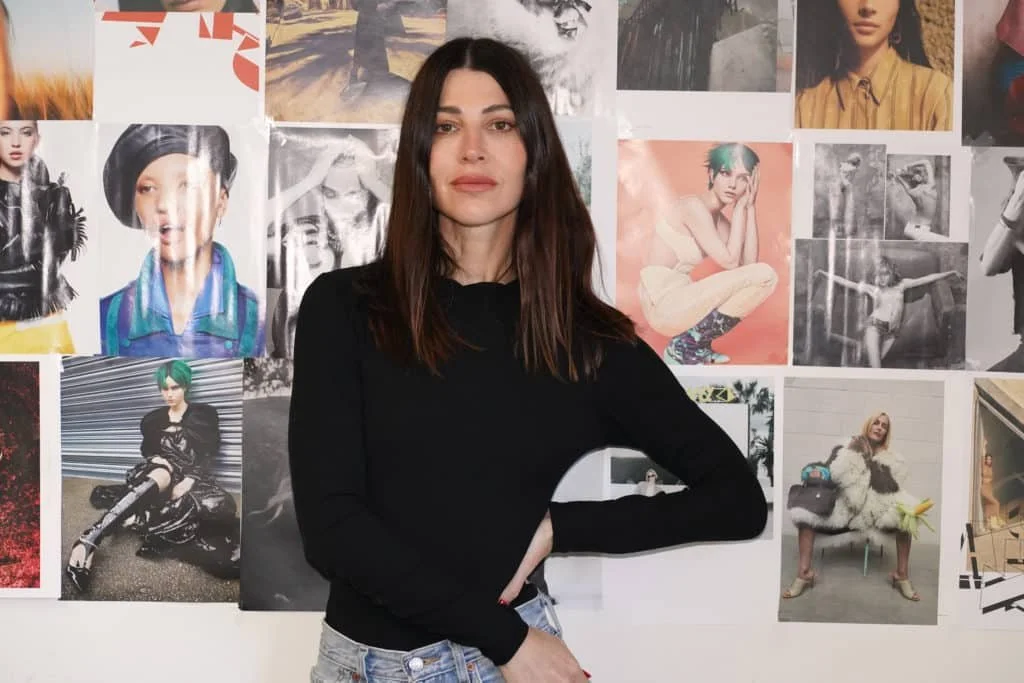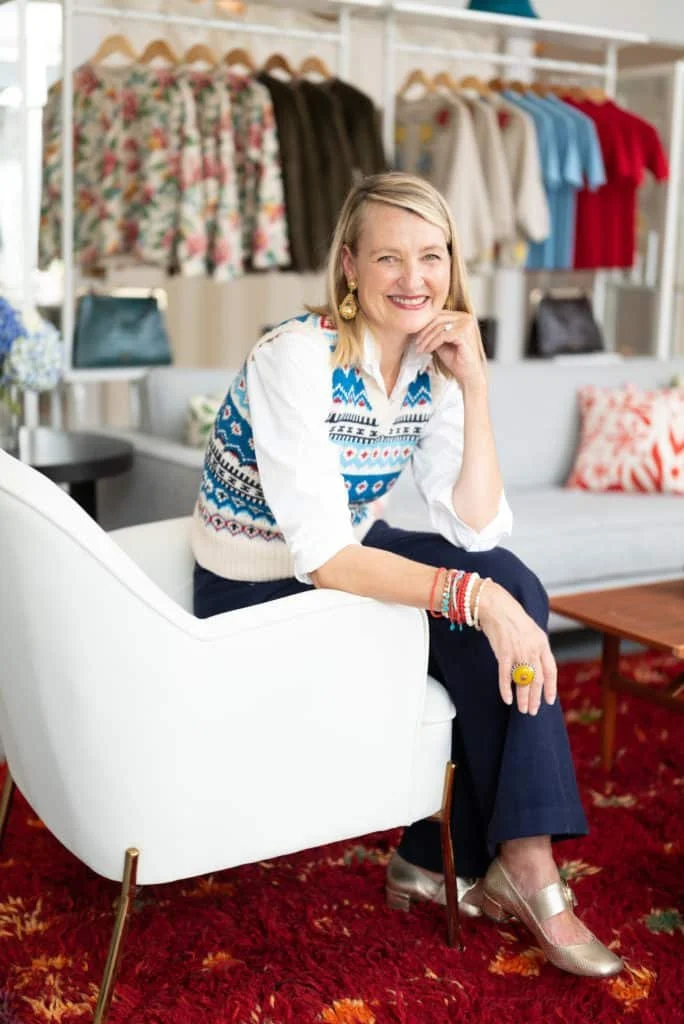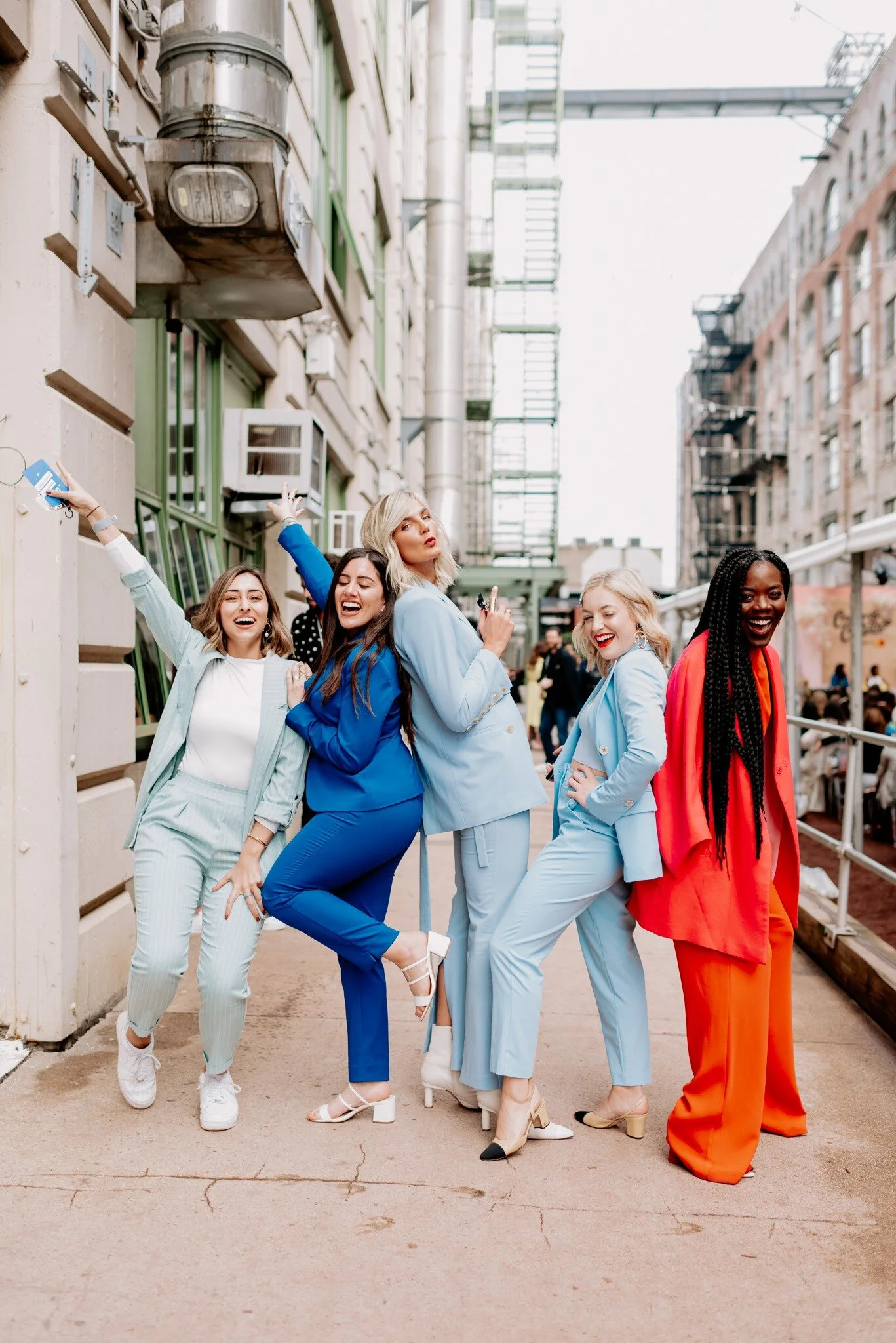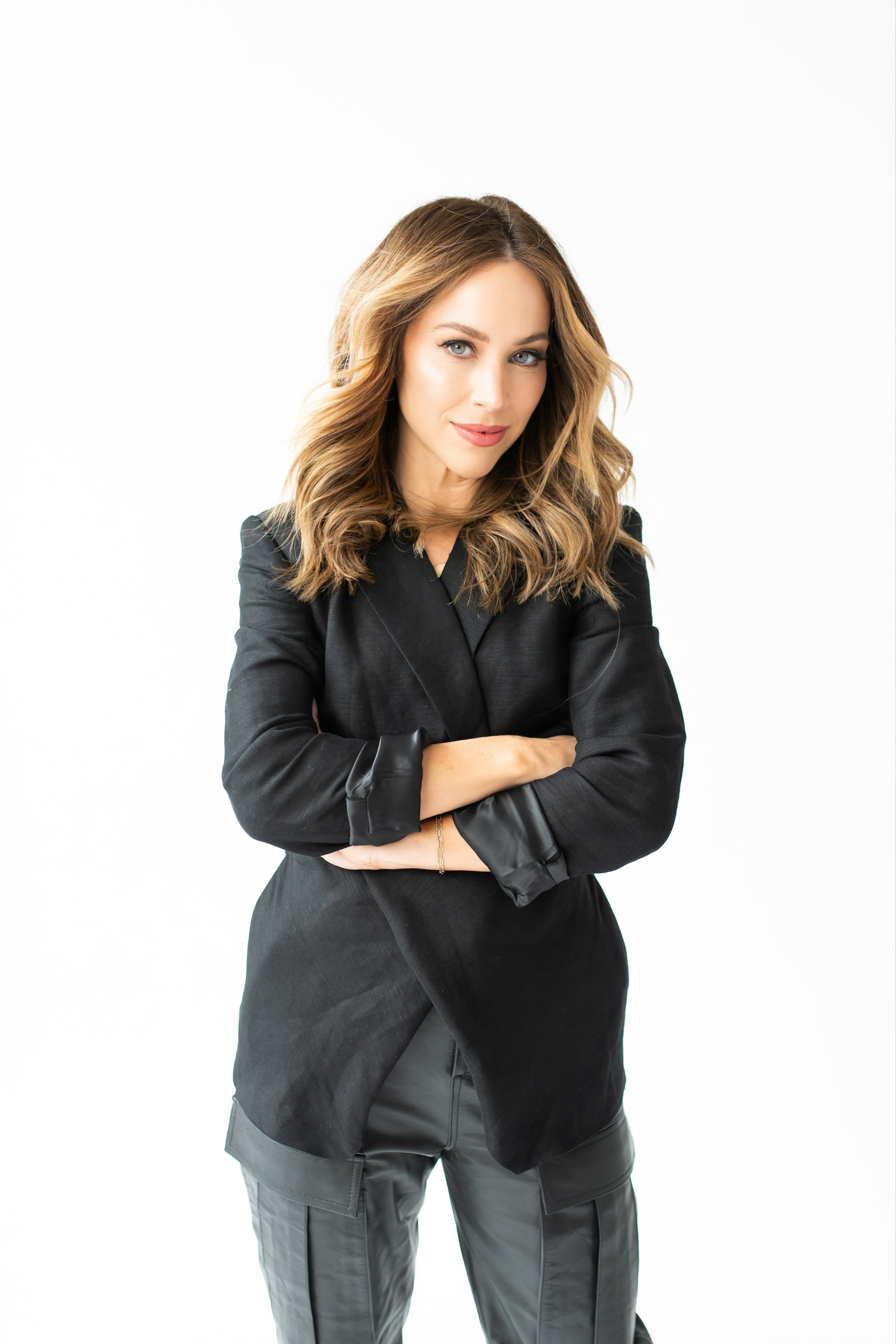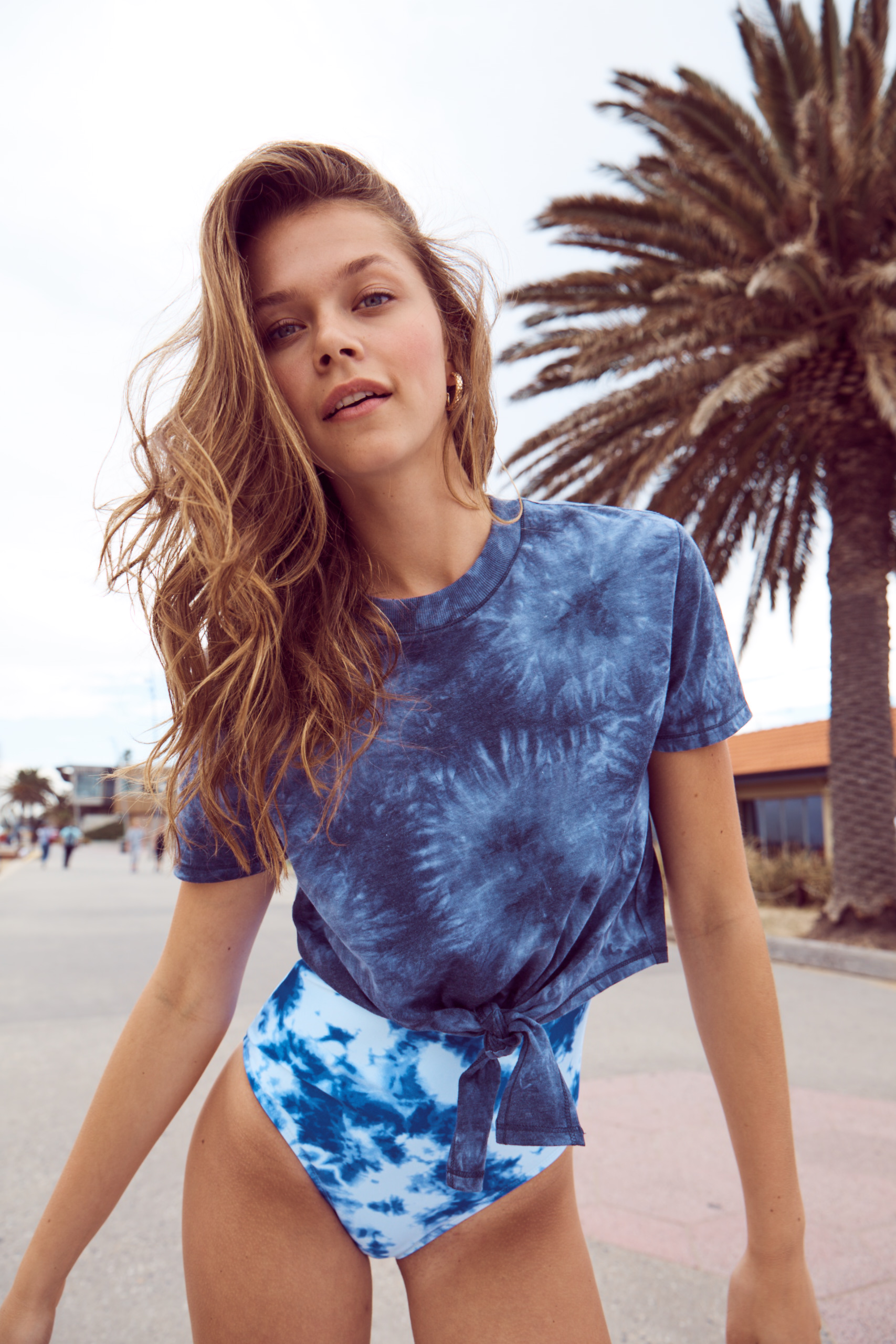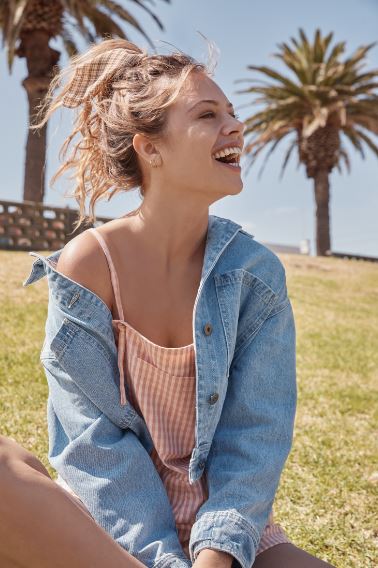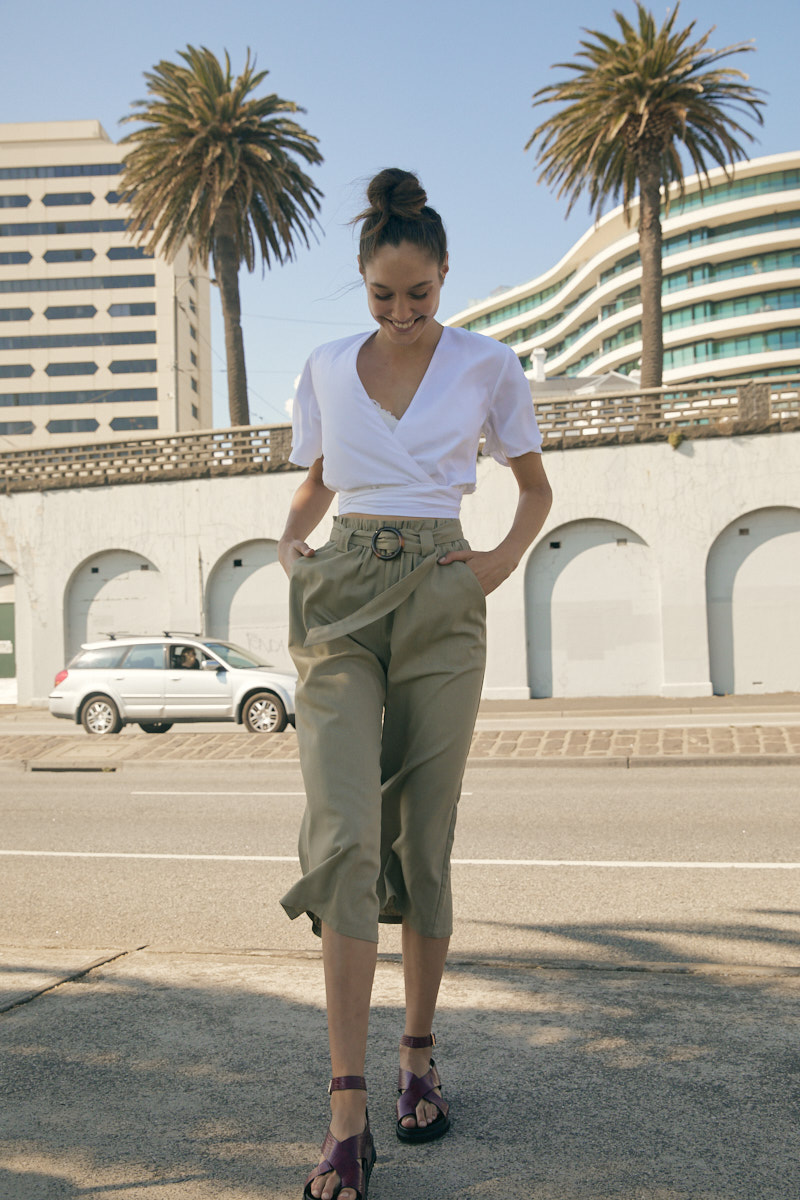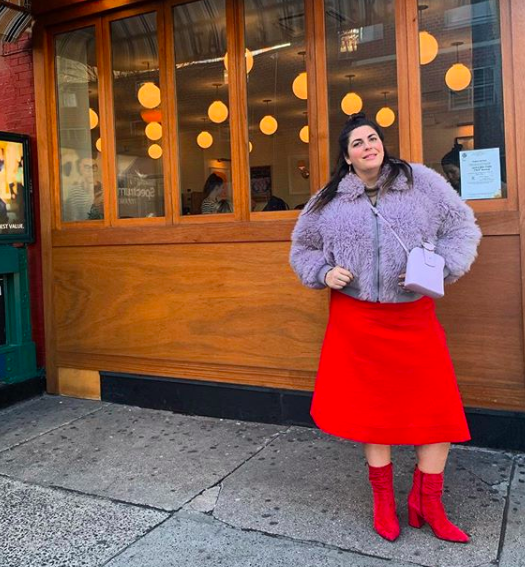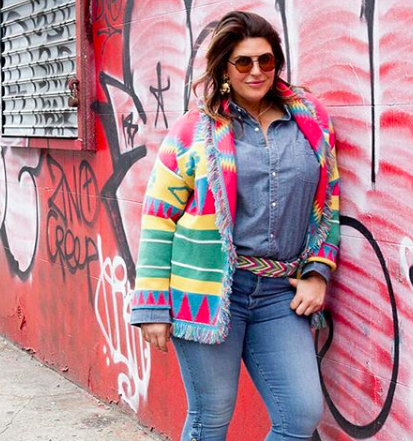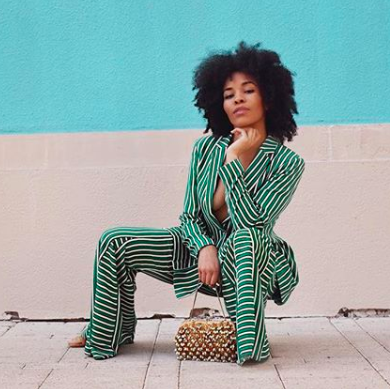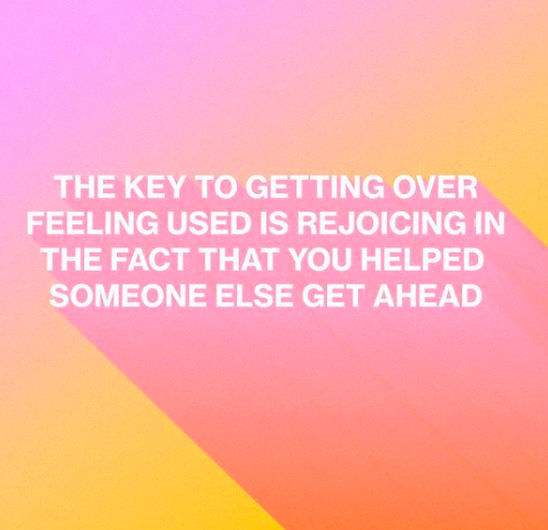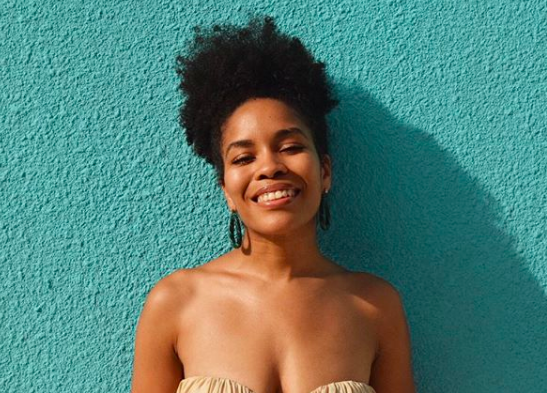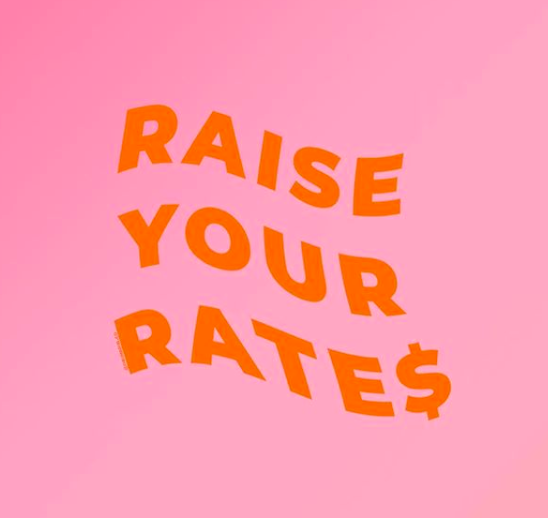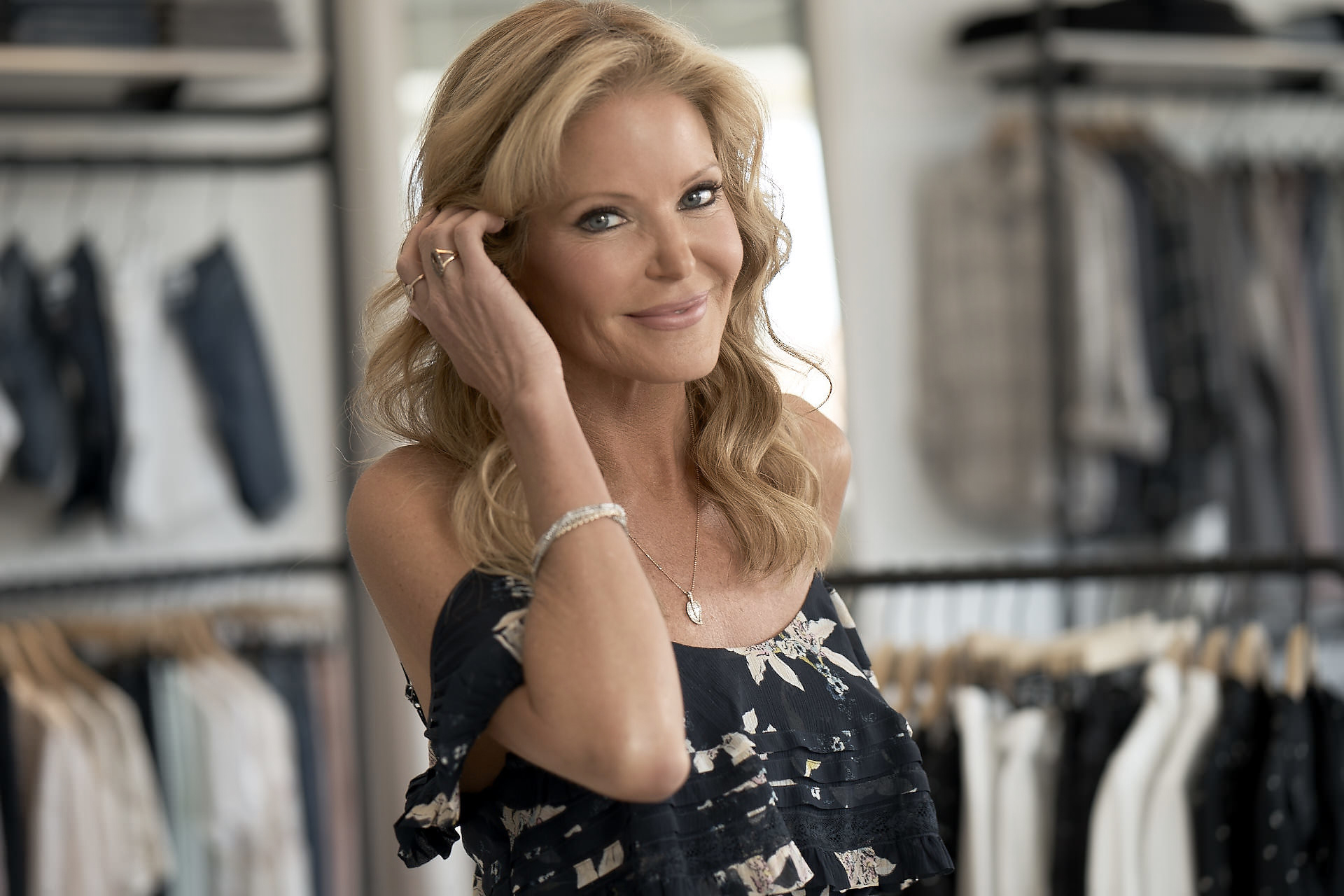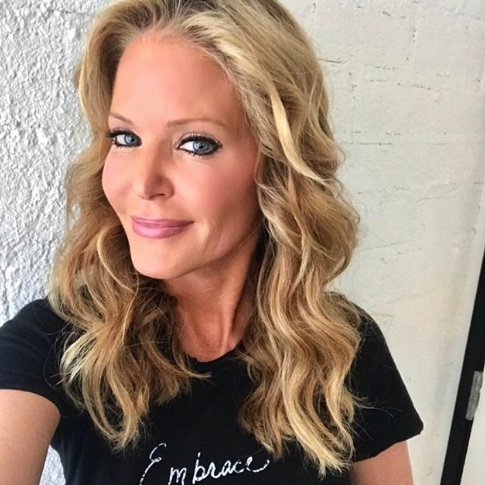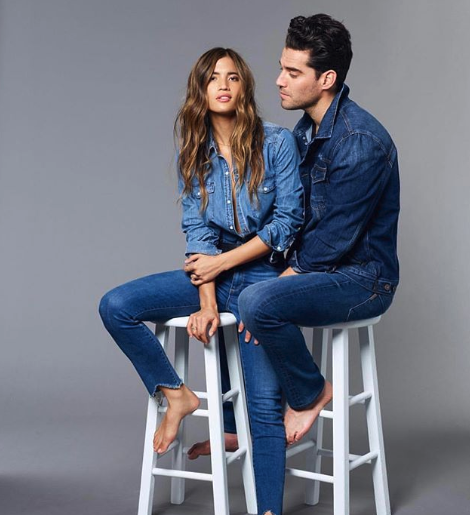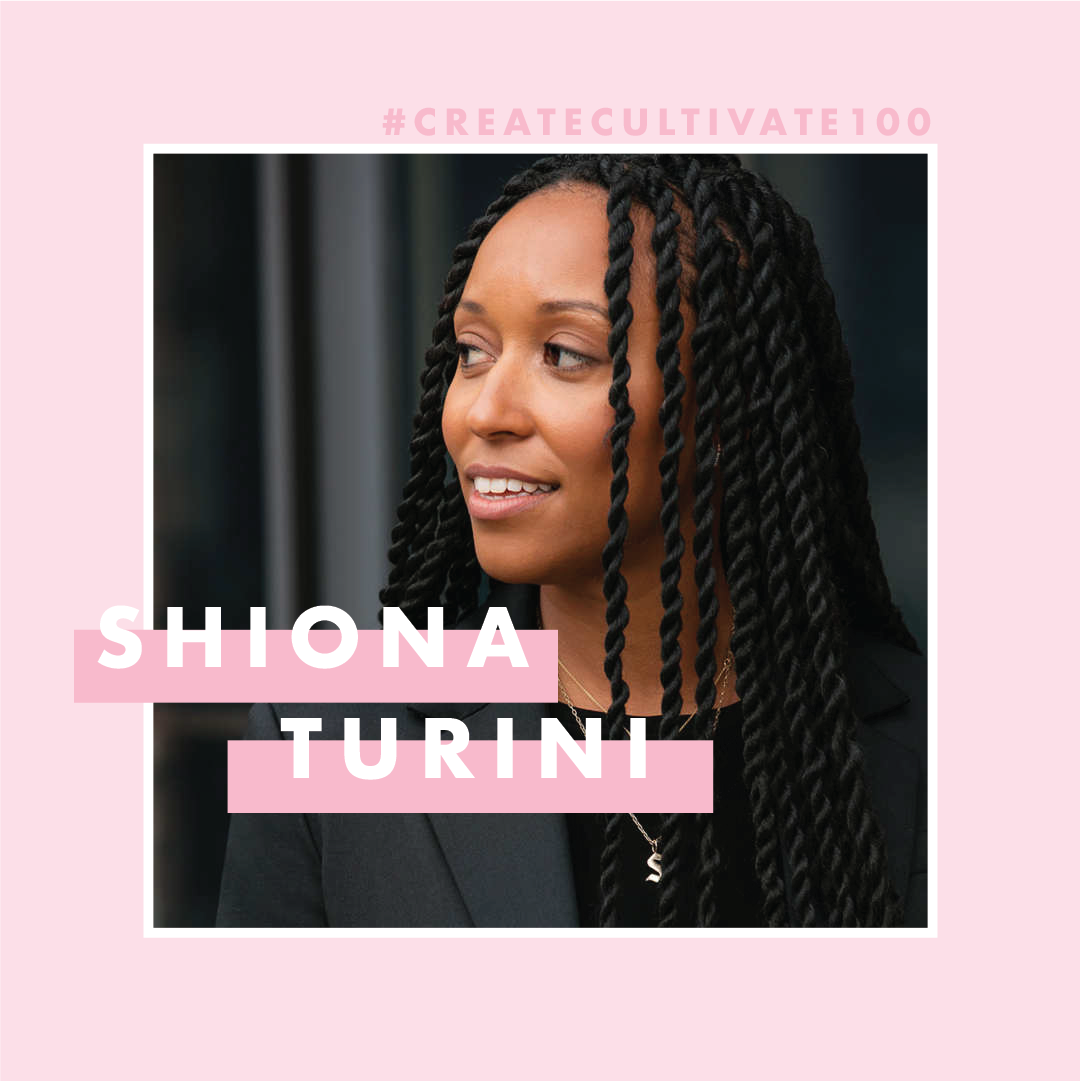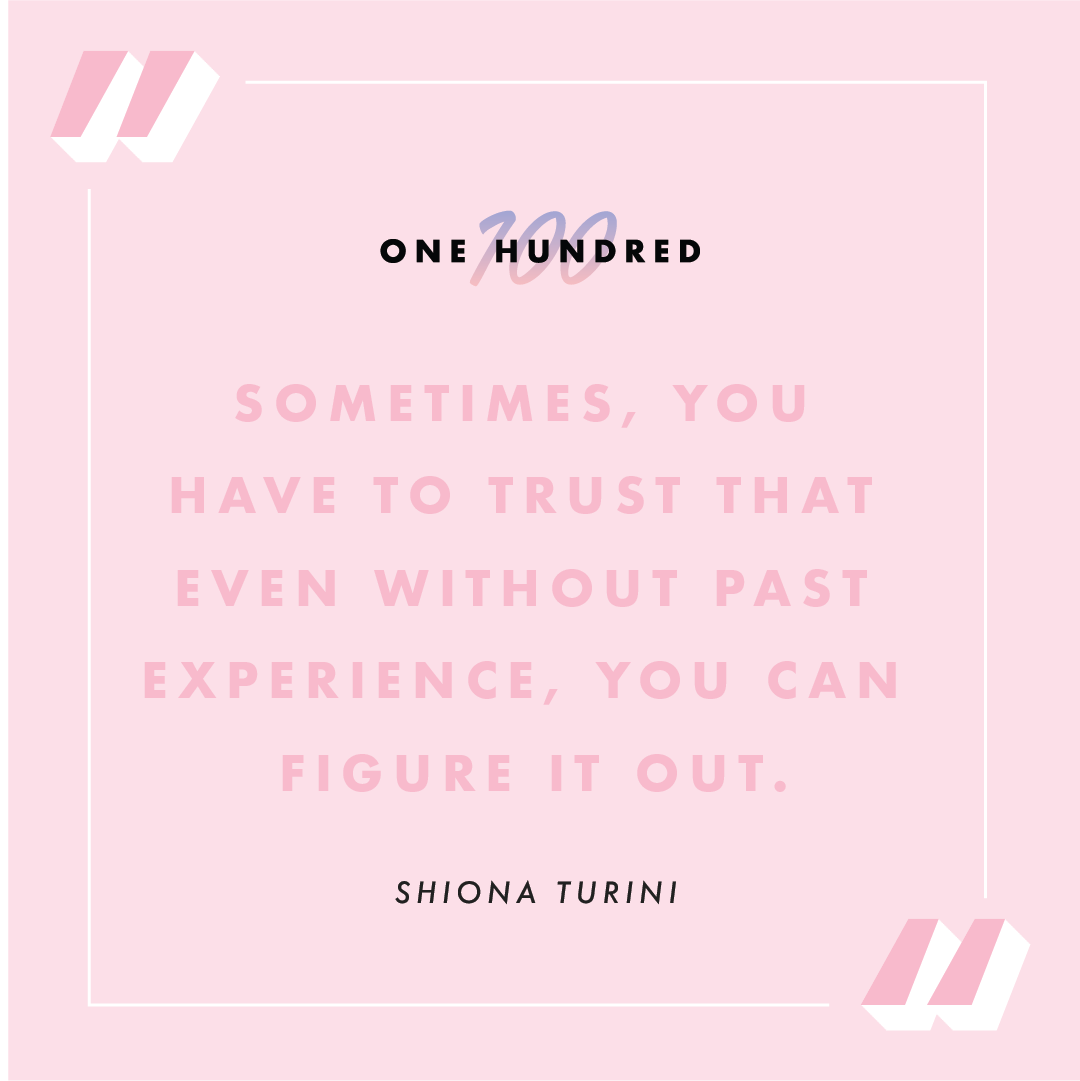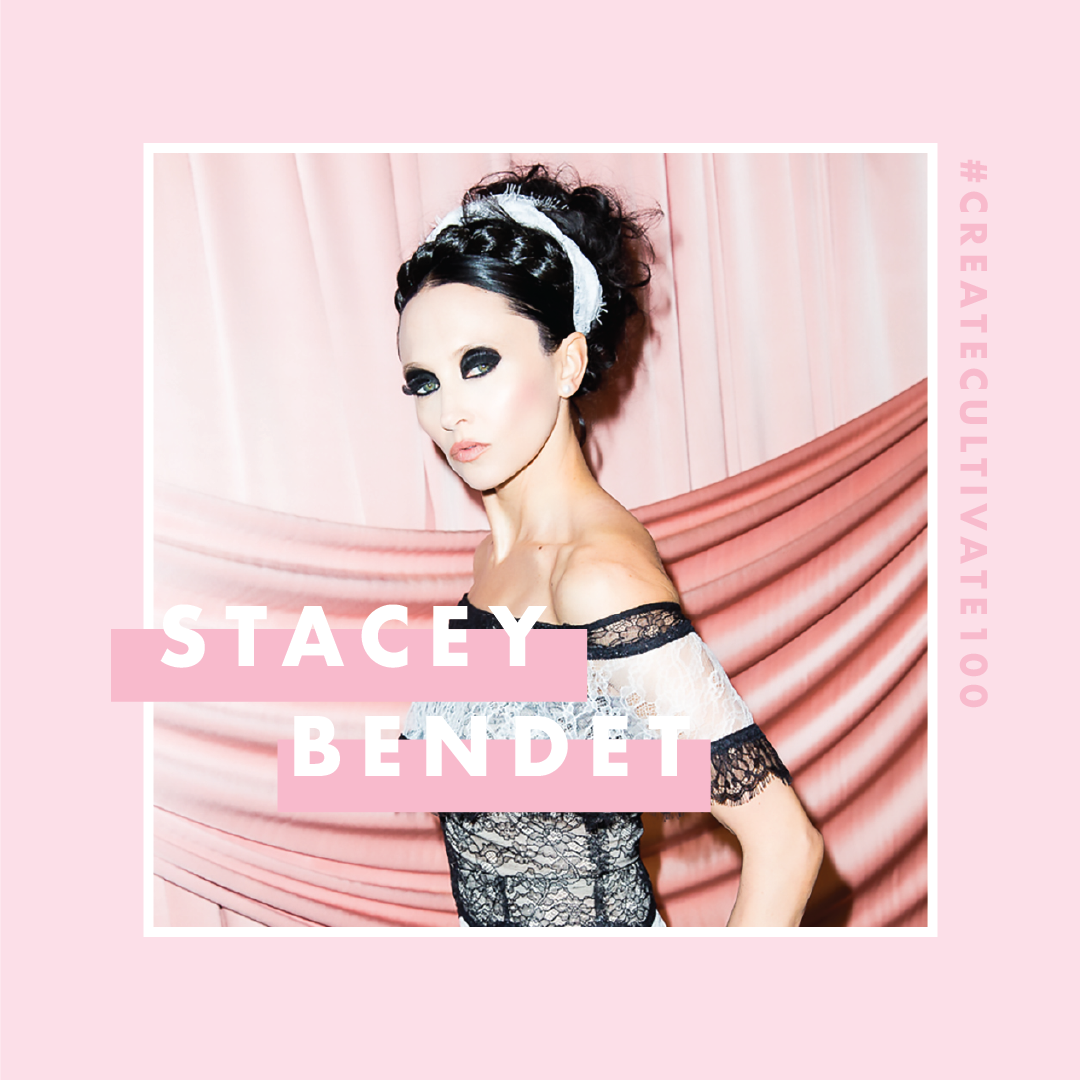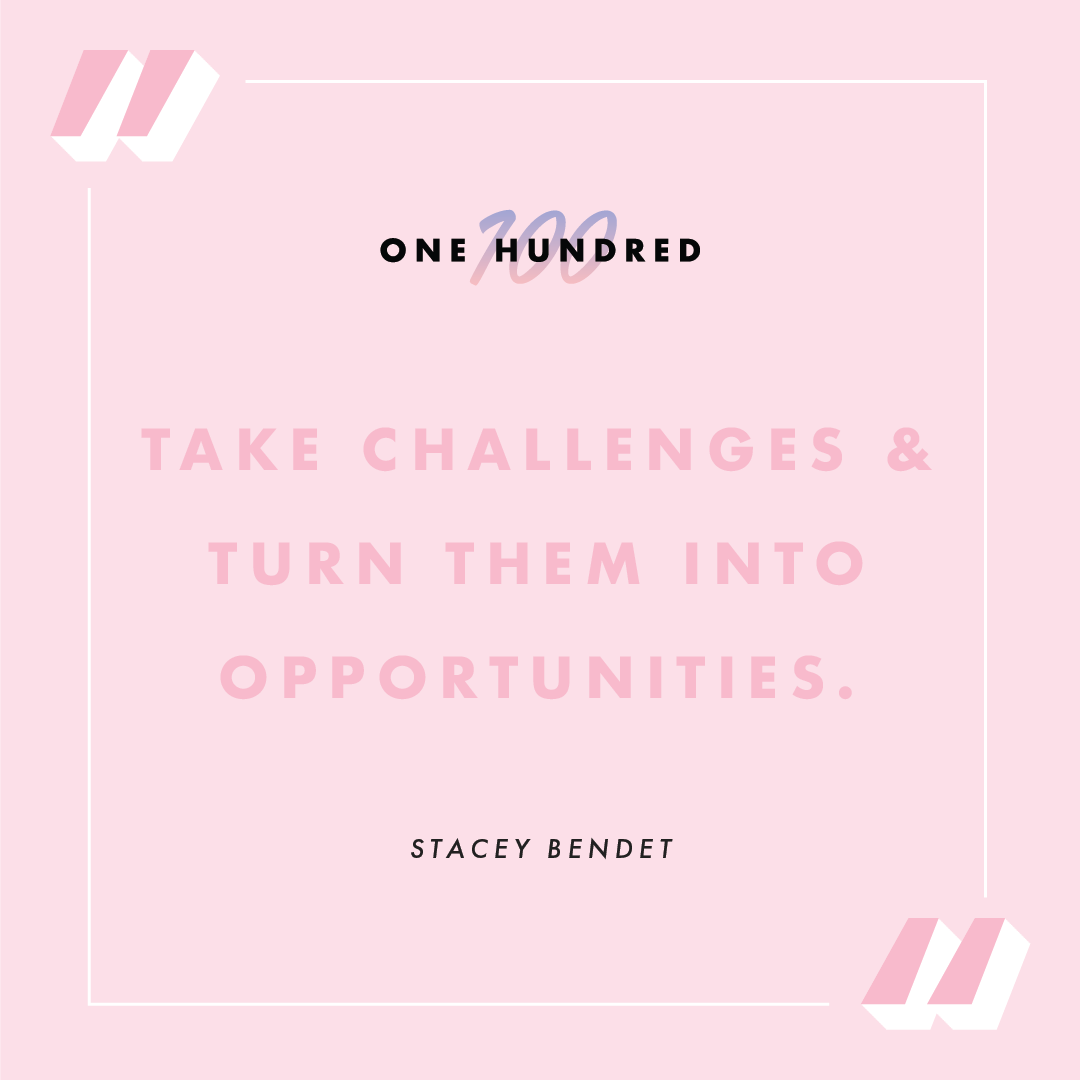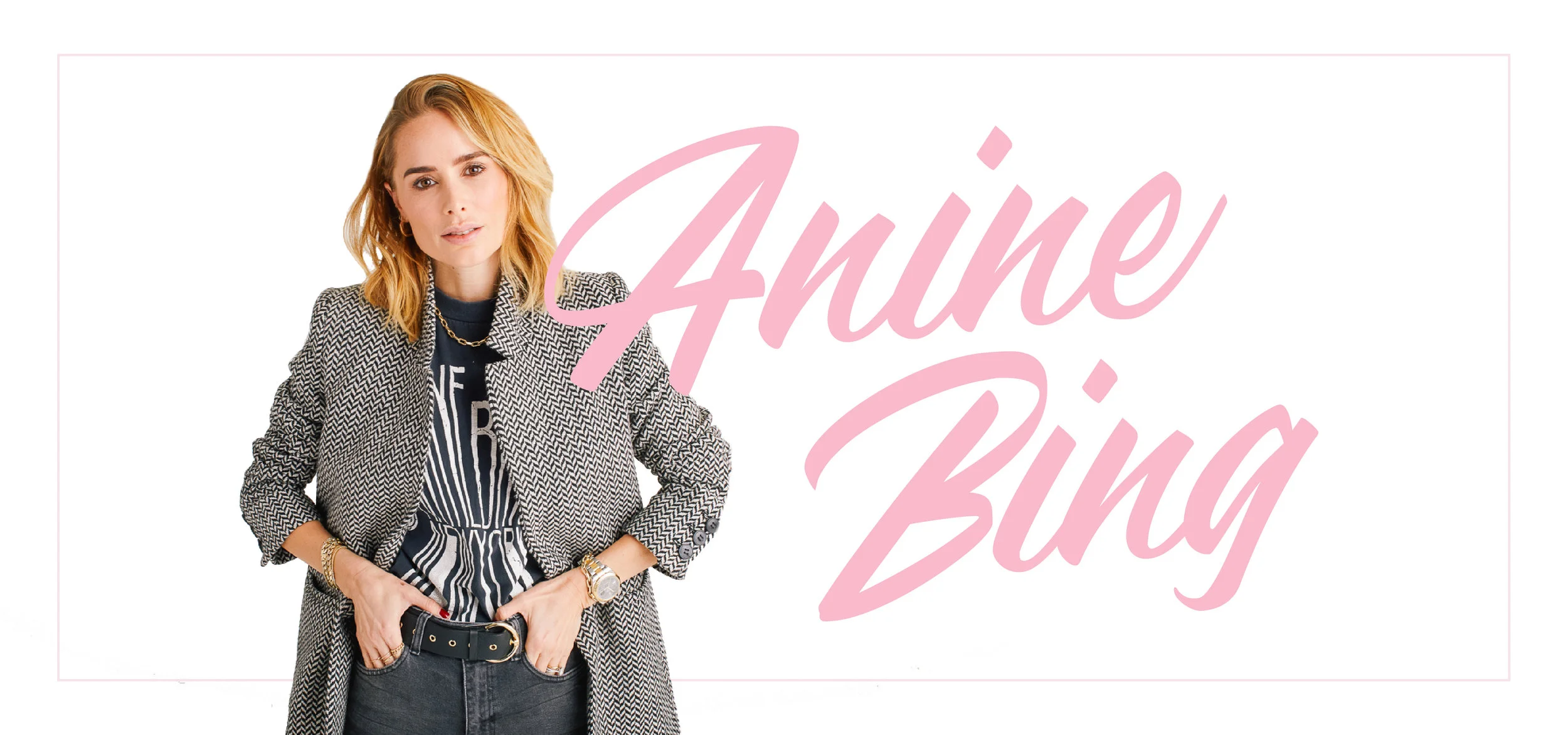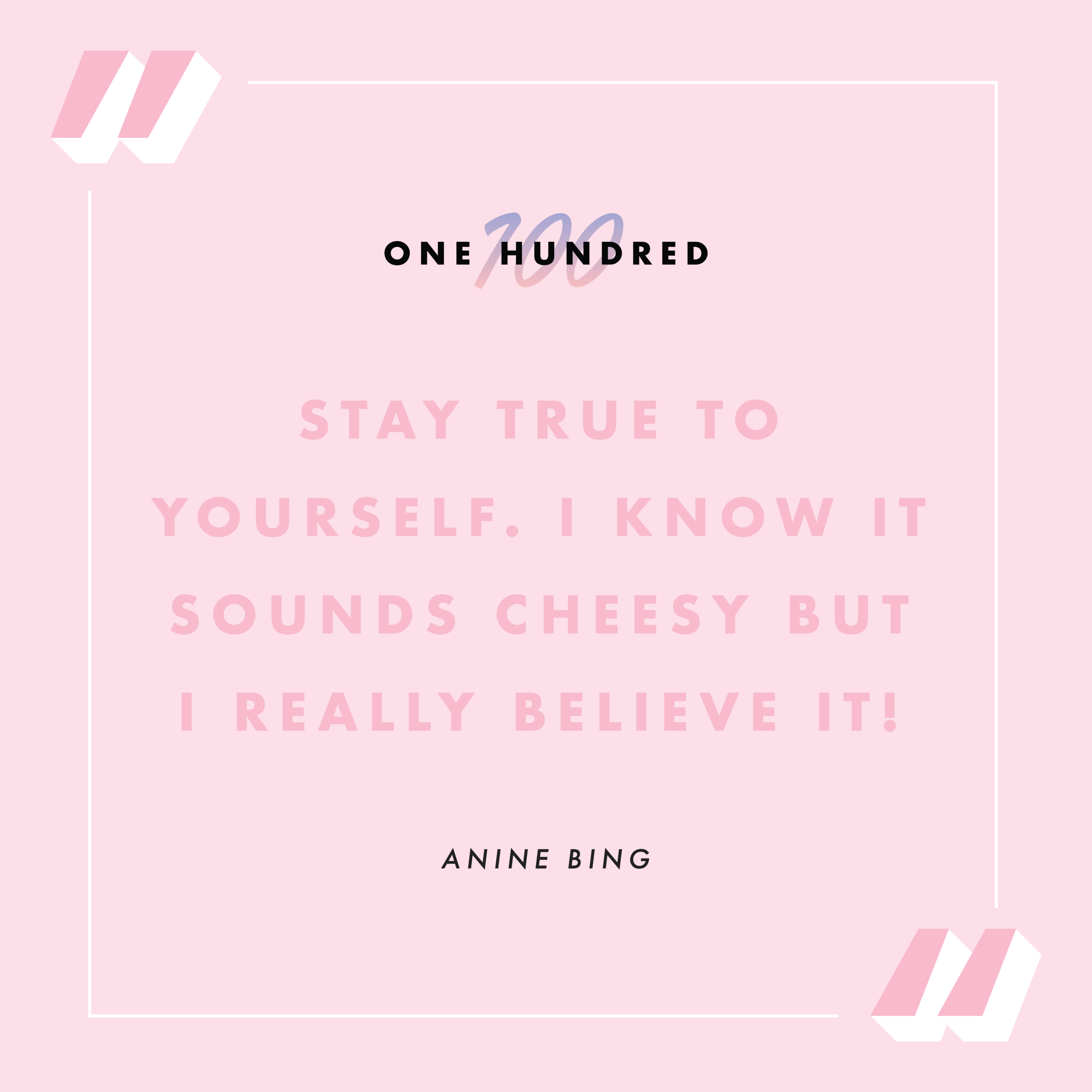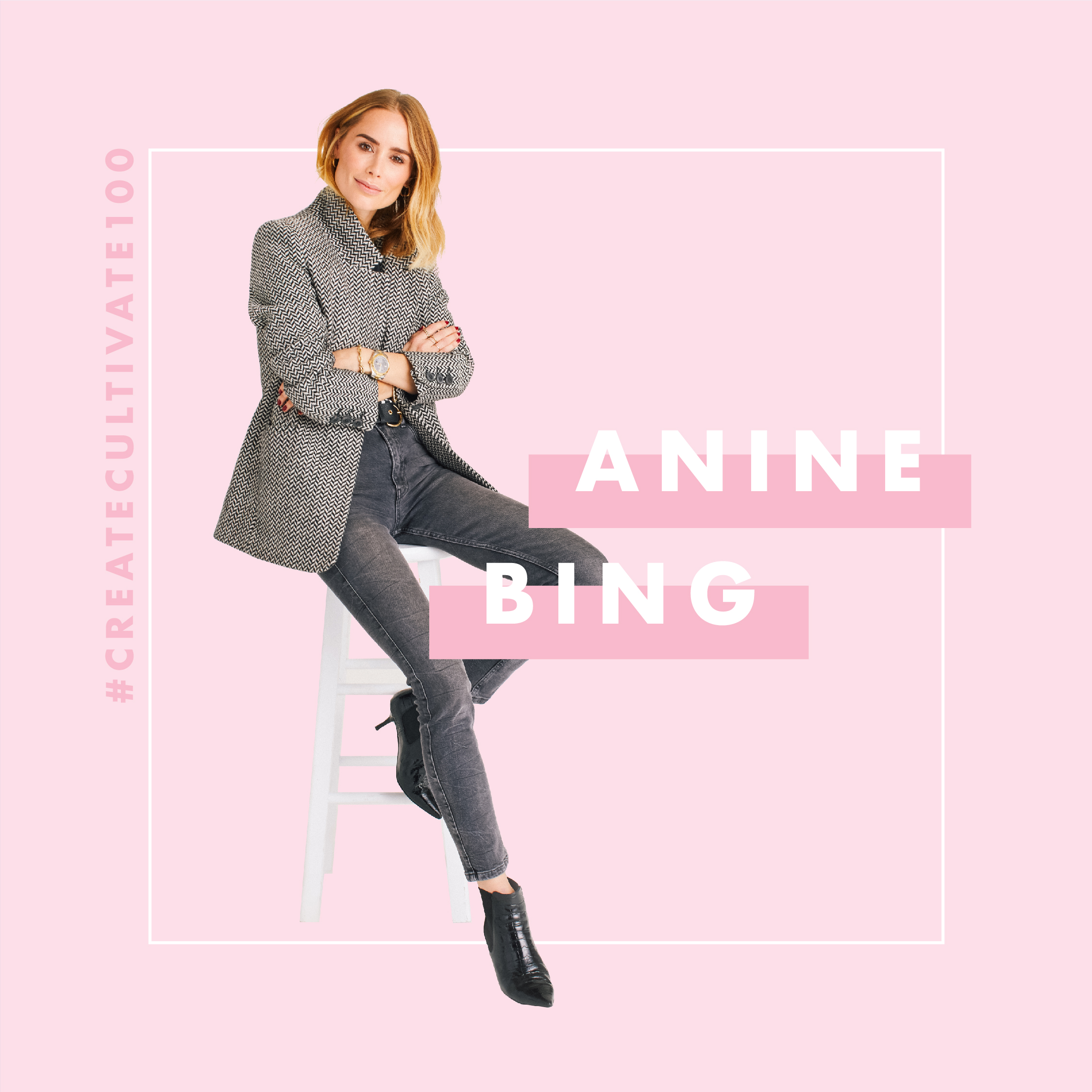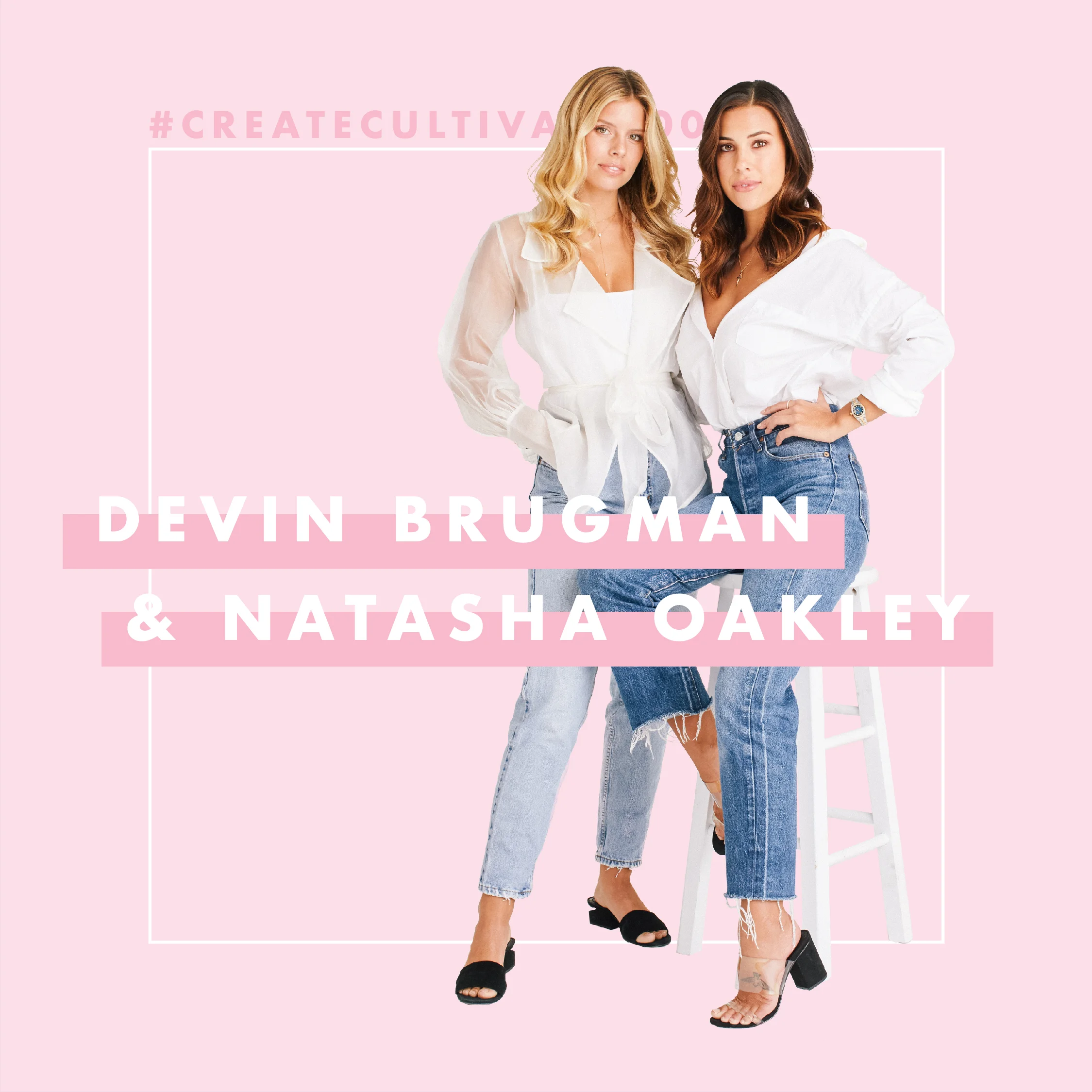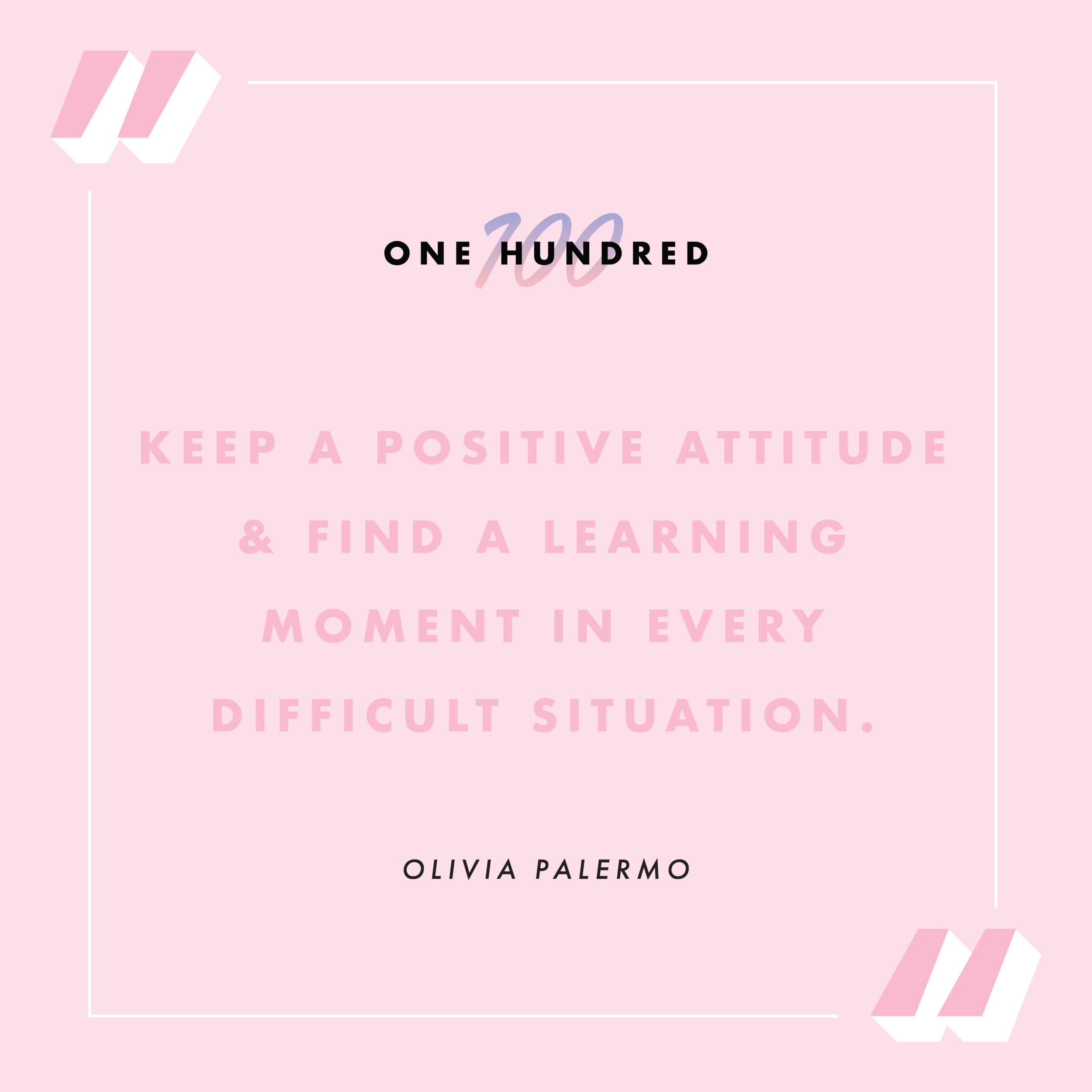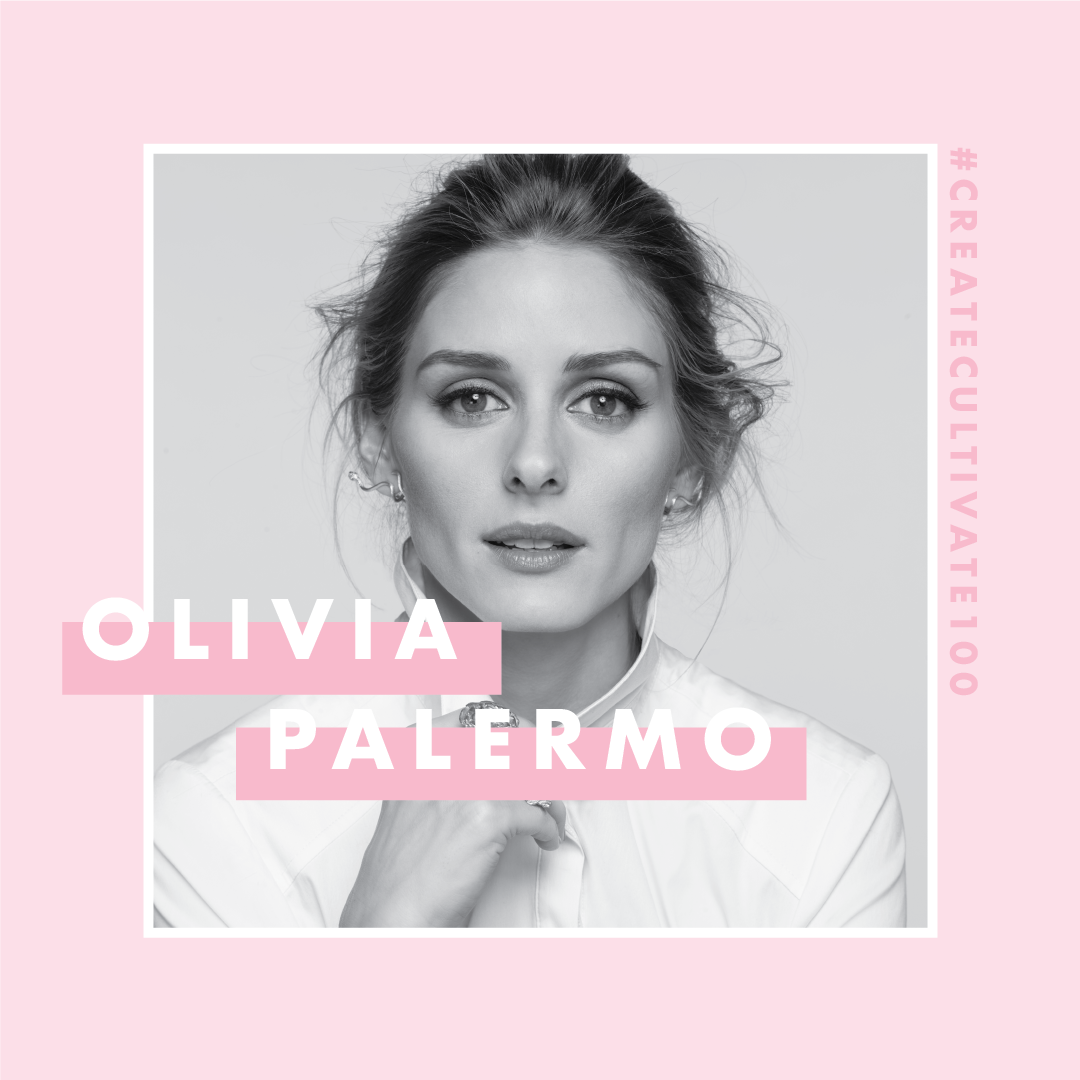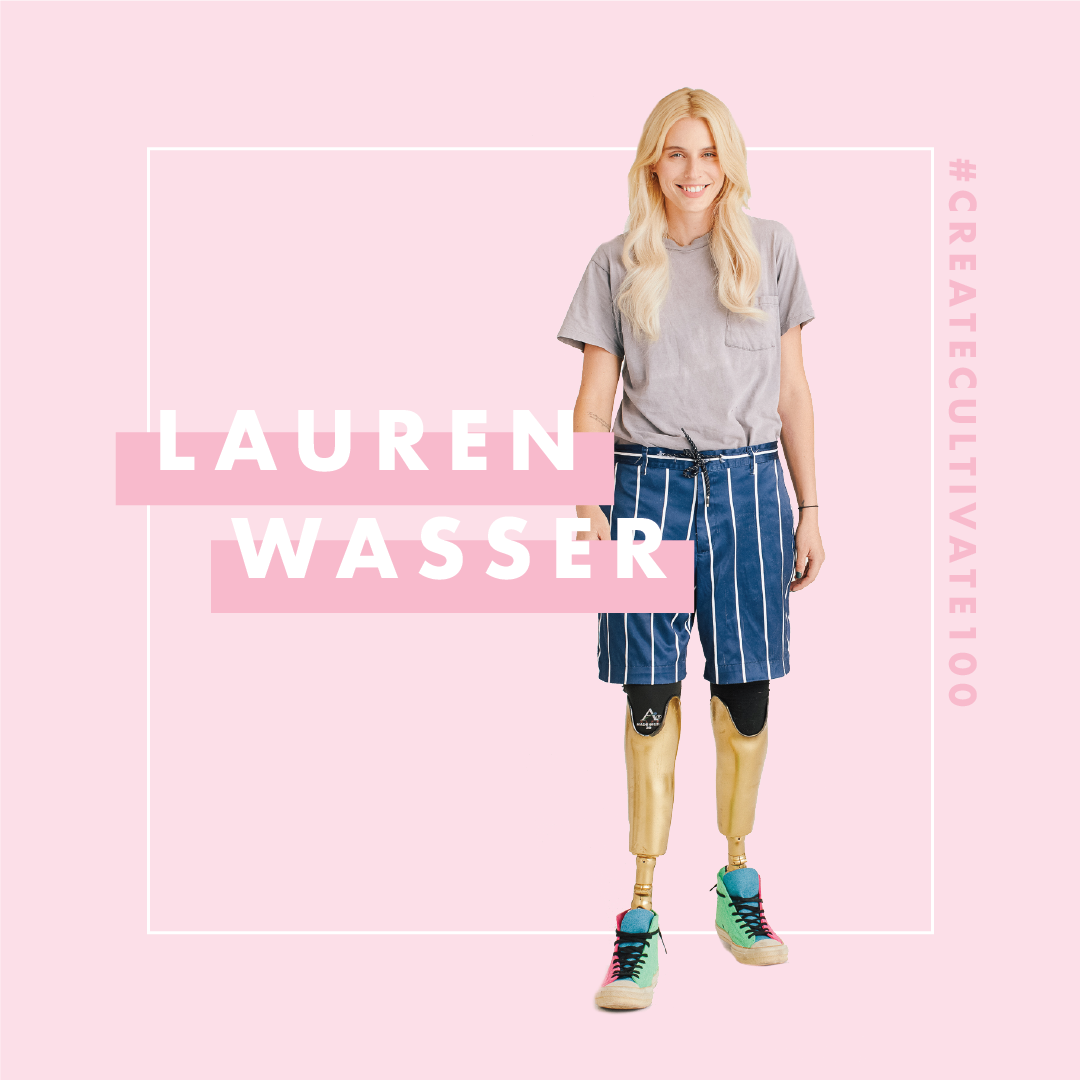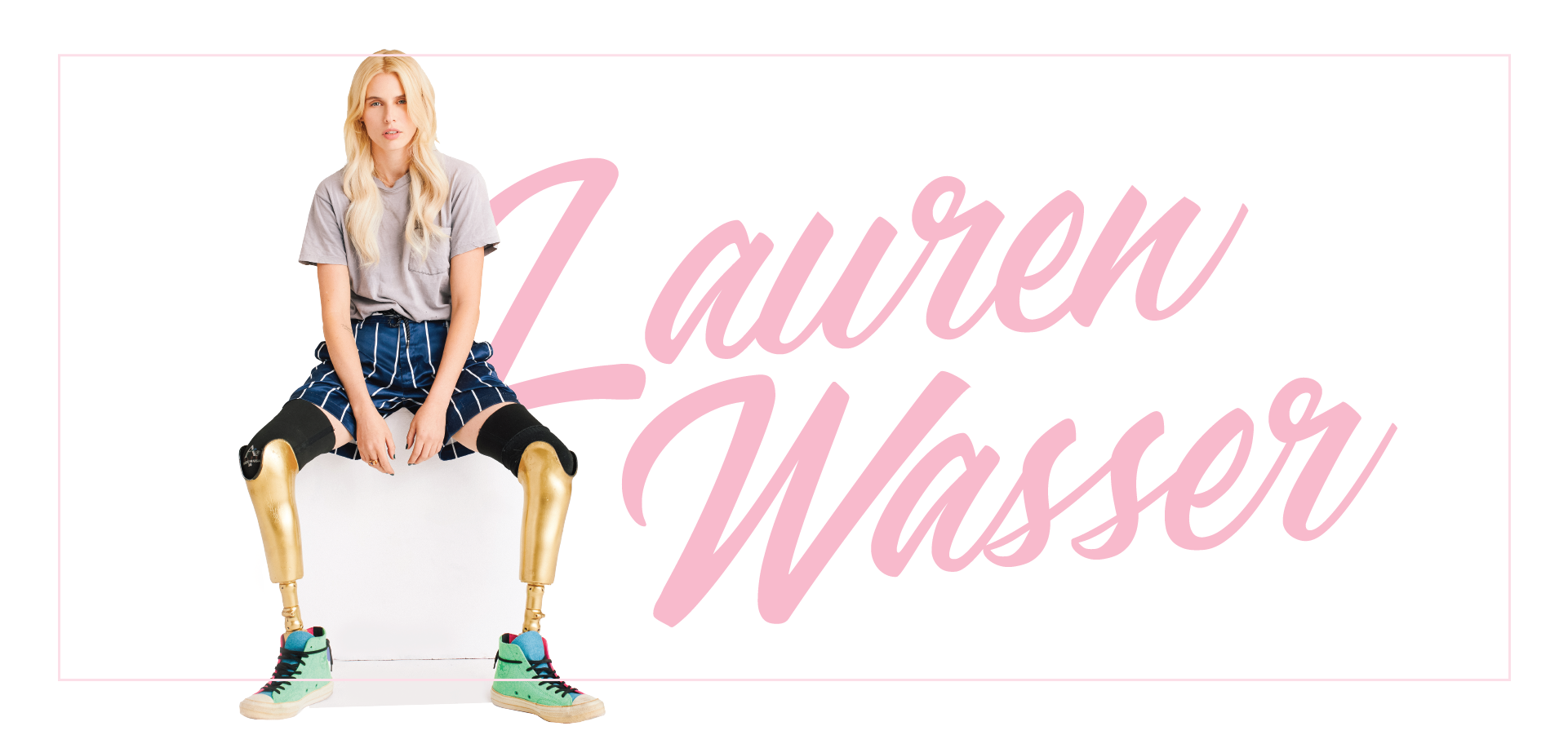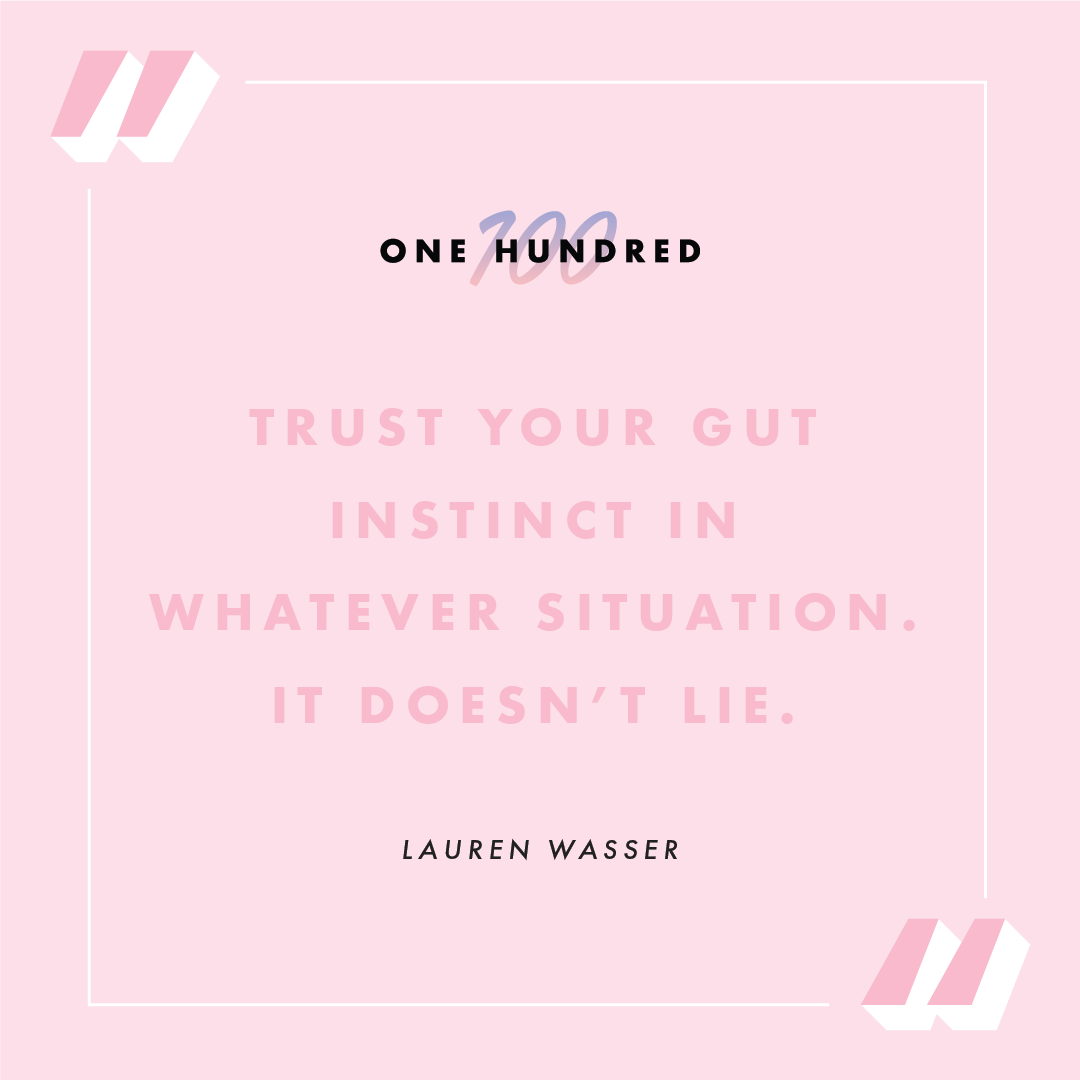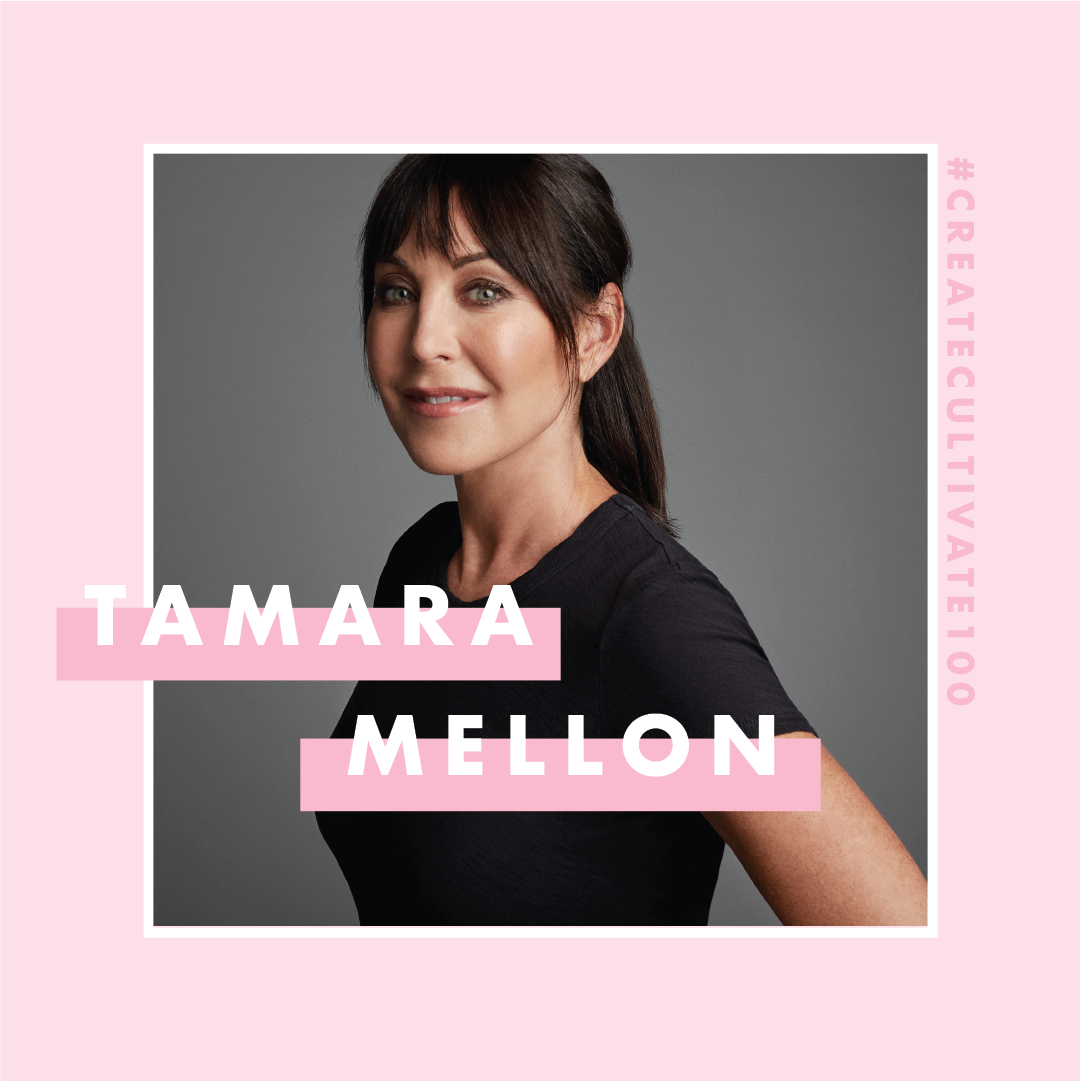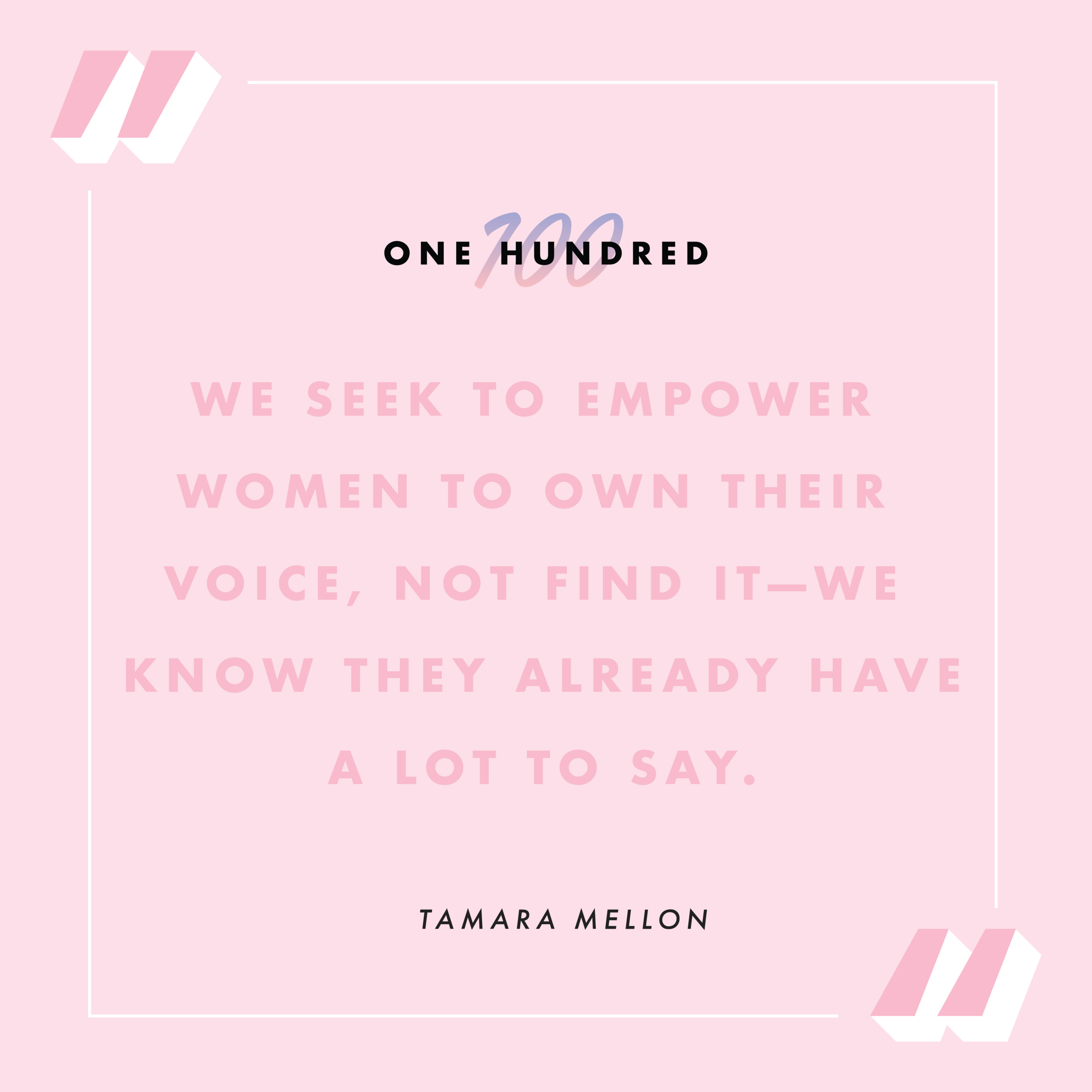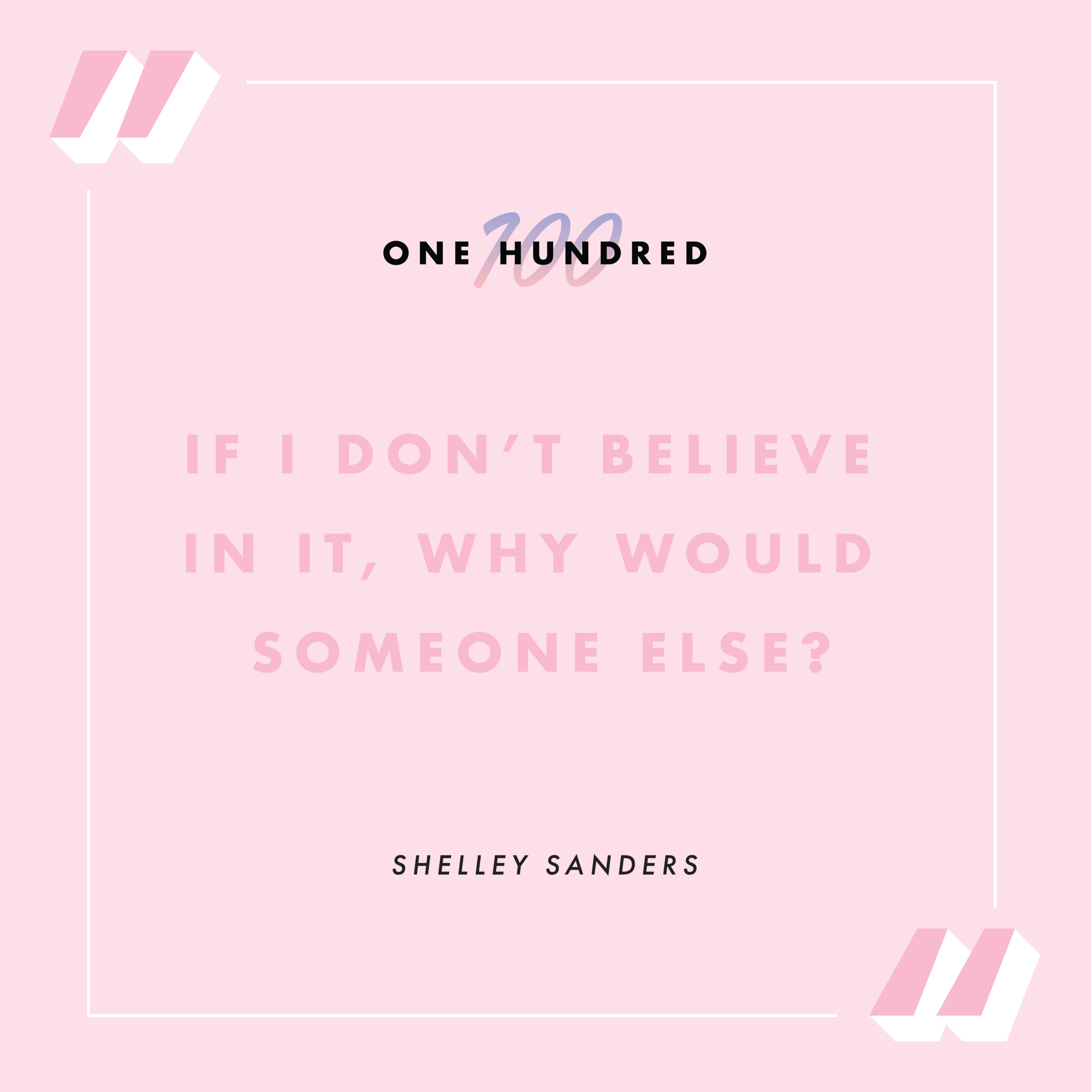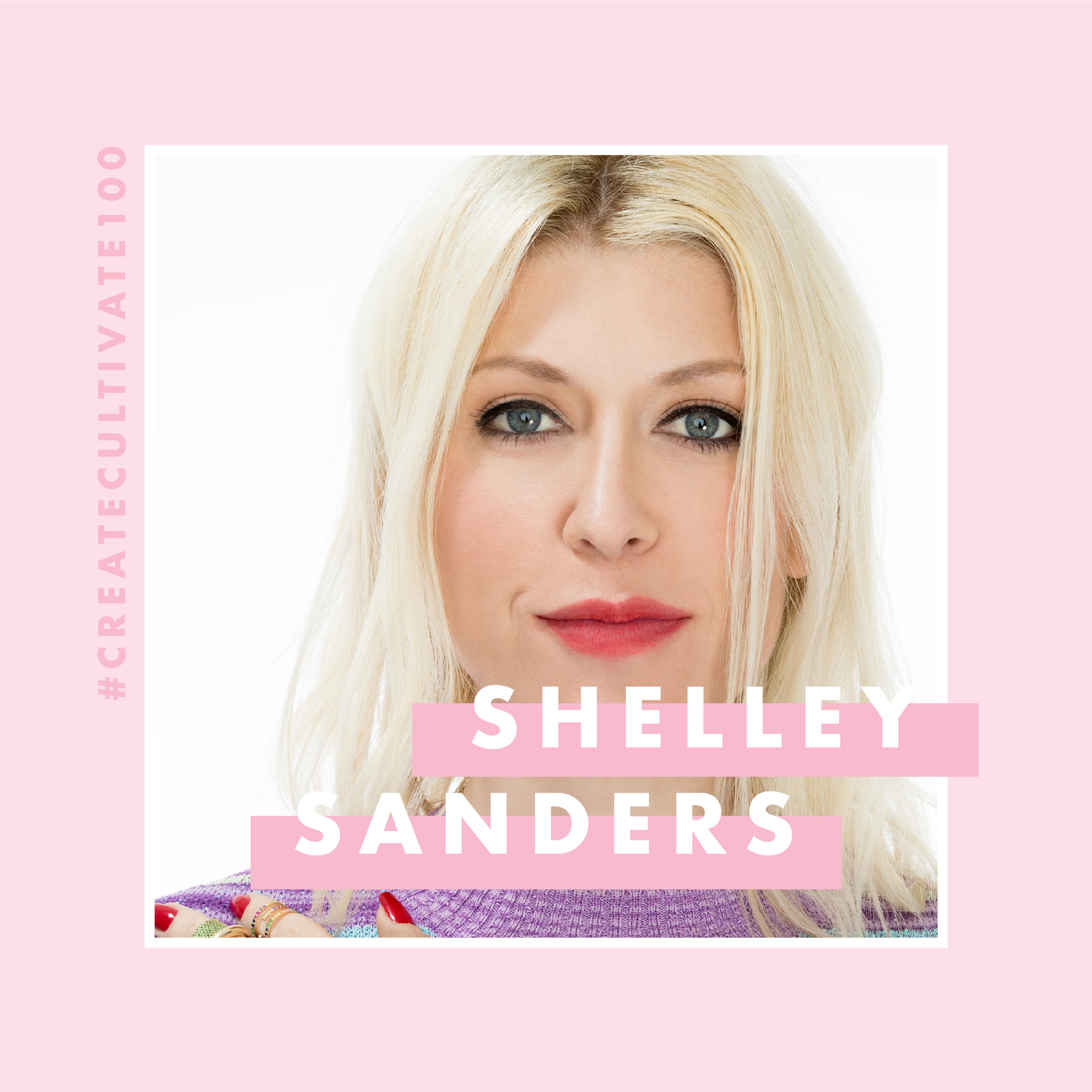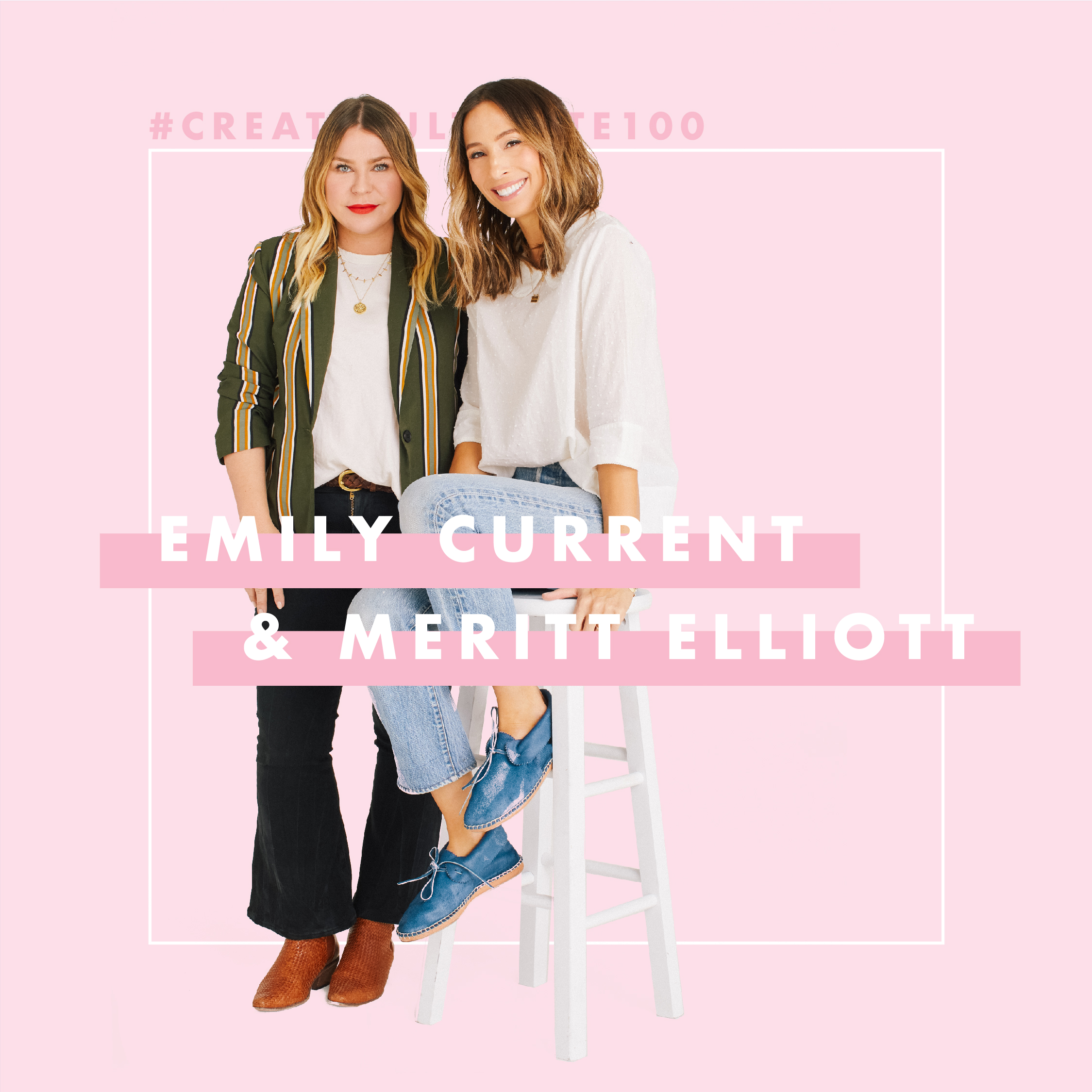Brand DNA: Why It’s Important and How to Define (and Stay True to!) Yours
ABOUT THE EPISODE
Your brand DNA is the heart of your identity as a business.
It establishes your mission and values, makes you unique from your competitors, and gives your customers a reason to choose to buy from you over your rivals.
And if anyone knows how to define a brand’s DNA, it’s Lauren Alexander.
The co-founder and creative director for the clothing line LNA launched the brand in 2006 when she was just 22 years old—with no college education and no experience in the fashion industry.
And 16 years later, it’s clear that she’s found success by staying true to her original vision: to create elevated basics that don’t look or feel “basic” at all. (A feat in an industry predicated on trends!)
In this episode, we chat about how she’s stayed true to her brand’s DNA, avoided pressure to give into fleeting trends, and what the future holds for LNA and the fashion industry at large.
EPISODE TOPICS
How a simple white T-shirt served as the catalyst and inspiration behind the LNA we know today
What it took to source manufacturers, develop fabrics, and launch the perfect line of elevated basics
How LNA's brand DNA was established from the very beginning
Why LNA pivoted to a DTC model after 13 years of wholesale only, and how they continue to grow
Pivoting from Wholesale to Direct-to-Consumer business model and how to maintain both
Utilizing influencer marketing to find brand advocates that truly embody your voice
The rise of social trends, and the importance of creating timeless staples
What kind of mindset is needed to turn your idea into action
The future of LNA and their expansion into more categories
RESOURCES
To connect with Lauren Alexander click HERE
To connect with Jaclyn Johnson click HERE
To learn more about LNA Clothing click HERE
To follow along with Create & Cultivate click HERE
To submit your questions call the WorkParty Hotline: 1-(833)-57-PARTY (577-2789)
LISTEN TO THE EPISODE
OTHER EPISODES YOU MIGHT LIKE . . .
How to Build a Social-First Content Brand With Sami Sage, Chief Creative Officer of Betches Media
The CEO of the 10th Fastest-Growing Woman-Led Company on How to Double Your Revenue
How Mielle Organics Founder Monique Rodriguez Built a Multi-Million Dollar Haircare Brand
THIS EPISODE IS BROUGHT TO YOU BY . . .
CDC Vaccine • Visit the CDC website CDC.gov for additional information you can trust about how COVID-19 vaccines can protect your entire family.
Shopify • Go to shopify.com/party for a FREE 14-day trial and get full access to Shopify’s entire suite of features.
Grow On: How to Double Your Revenue With Elyce Arons, Co-Founder and CEO of Frances Valentine
ABOUT THE EPISODE
Doubling your revenue is no easy task.
You need to set well-defined goals, create meaningful connections with your customers, and discover new distribution channels and marketing opportunities.
Which is something that Elyce Arons knows a thing or two about.
In the midst of a pandemic that has pummeled the fashion industry, the former Co-founder of Kate Spade has led the luxury lifestyle brand Frances Valentine to double (!) its revenue.
Needless to say, I can’t wait to chat with Elyce about how she’s grown the brand exponentially, including the old-school marketing strategy she tapped into to increase the brand’s sales by 40% (!).
EPISODE TOPICS
Her Second Act: Building Frances Valentine
Adapting to the New Online Retail Space
Why She Recommends a Mix of DTC, Wholesale & Retail
Why Pop-Ups Are the Best Way to Test New Markets
The Importance of Regional Retail Spaces
How She Doubled Her Revenue During the Pandemic
Where She Puts The Majority of Her Marketing Dollars
What She Pulls Inspiration From In The Design Process
Her Predictions on Major Fashion Industry Shifts
RESOURCES
To connect with Elyce Arons click HERE
To connect with Jaclyn Johnson click HERE
To learn more about Frances Valentine click HERE
To follow along with Create & Cultivate click HERE
To submit your questions call the WorkParty Hotline: 1-(833)-57-PARTY (577-2789)
LISTEN TO THE EPISODE
OTHER EPISODES YOU MIGHT LIKE . . .
THIS EPISODE IS BROUGHT TO YOU BY . . .
CDC Vaccine • Visit the CDC website CDC.gov for additional information you can trust about how COVID-19 vaccines can protect your entire family.
Shopify • Go to shopify.com/party for a FREE 14-day trial and get full access to Shopify’s entire suite of features.
How Being Overdressed for an Interview Can Negatively Affect Your Chances of Landing the Job
Make a great first impression.
Photo: Create & Cultivate
Once you schedule an interview, these are just a few of the questions that might be swimming in your head: What if I show up and I’m overdressed? What if I’m underdressed? Will it even make that much of a difference? How bad is it really to be overdressed for an interview?
According to data released in the Job Interview Anxiety Survey, 92% of employed Americans get stressed out about job interviews, but it’s not just the actual interview that stresses people out. Figuring out what to wear for an interview can often become just as stress-inducing as wondering what questions they will ask you.
With the rise of startups and tech companies with laid-back company cultures, figuring out what to wear for your next interview has become more confusing than ever, but these tips will help you navigate the process with ease.
How bad is it to be overdressed for an interview?
Really bad.
If you’re interviewing at a company known for its laid-back dress code and company culture, showing up to your interview in a suit will show that you haven’t done your research on the company and the environment.
Even worse, showing up in a suit could mean that you did research the company and didn’t care about the dress code and rules.
What can you do to ensure that you’re properly dressed?
Research the company to figure out what the company culture is like. Company culture often dictates the dress code and how formal or casual people will dress. Use websites like Glassdoor to your advantage. These platforms allow users to rate and comment on companies, giving you inside knowledge about the company culture, and what it’s really like to work there. Often people will discuss dress code and the general vibe of the office.
Another option is to search for employees on LinkedIn. Observe what employees are wearing in their LinkedIn profile photos to get a better sense of the daily dress code.
Finally, if all else fails, pick up the phone and ask someone about the company’s dress code. This is something so simple, yet almost no one does this. If you want to make sure that you won’t be overdressed for an interview, simply pick up the phone and call the front desk or a recruiter that you’re working with.
If the dress code is really casual, stick with the guidelines, but ensure that you look put together and ready for work.
This is the most important thing to remember when you’re figuring out what to wear for an interview. I always suggest being a step above the dress code, but if you do decide that it would be in your best interest to come completely casual, just make sure that you look put together. Regardless of whether or not the dress code is super casual, you do not want to look like you just rolled out of bed. You’re still interviewing for a job.
If you do decide to go with jeans, make sure they are dark wash jeans without any rips or tears. Similarly, if you opt for a T-shirt, make sure that it is clean, plain without graphics or logos, and wrinkle-free. If you don’t like to iron, (I hate ironing!) invest in a mini steamer. It will change your life and make it super simple to get the wrinkles out of any of your clothes.
How bad is it to be overdressed for an interview? Depending on the company it could be detrimental and could be the reason why you don’t get the job. Showing up completely overdressed suggests that you didn’t research the company and have not paid any attention to the company culture.
Employers want to ensure that they hire employees who will fit in with the general office vibe, and showing up to an interview overdressed can be a major red flag. When you’re determining what to wear for your next interview, do some research on the company dress code and company culture, and dress accordingly. With the rise of business casual and completely casual dress codes, figuring out what to wear for your next interview can be tricky, however, if you follow these simple steps, you’ll be good to go.
Good luck!
About the author: A native San Franciscan, Michele Lando is a certified professional résumé writer and the founder of writestylesonline.com. She has a passion for helping others present the best version of themselves, both on paper and in person, and works to polish an individual’s application package and personal style. Aiming to help create a perfect personal branding package, Write Styles presents tips to enhance your résumé, style, and boost your confidence.
Love this story? Pin the below graphic to your Pinterest board.
This story was originally published on September 21, 2018, and has since been updated.
MORE ON THE BLOG
Influential Women, Past and Present
In building a better future, we must draw upon the stories of the past.
We tend to focus our attention on moving forward and what's next. But in building a better future, we must also draw upon the stories of the past. Where we are now – and often who we are now – is a culmination of the influence and efforts of those who came before us. In honor of Women’s History Month, we are amplifying the stories of influential women past and present. Meet the inspired women who are inspiring women – modern day history in the making.
DANIELA RAMIREZ
Founder, Nany’s Kloset
Daniela Rameriz wearing Vince Camuto Tie-Waist Cropped Jumpsuit, Orla Zebra Canvas Tote, and Ladeinela Braided-Strap Thong Sandal
As a woman, what are you most proud of?
Absolutely everything! I love how smart, strong, intuitive, fearless, and caring women are. I’m also super proud of being able to grow life–and while I have upmost respect for all the women who choose a different path than motherhood–personally, I am very proud of what our bodies are capable of as women, and I am proud to be a mother to my son, and baby-to-be that is currently in my tummy.
What woman from history has been an inspiration to you? How did her influence change your life or inspire you?
There are so many amazing women that come to my mind, starting with my mom and the women around me who inspire me on the daily. If I have to choose someone from history, I would say Frida Kahlo. I was always so inspired by her ability to turn her suffering into art, while also being extremely strong and defying gender stereotypes way before her time.
What is a challenge you had to overcome when building your brand and business that speaks to your experience as a woman?
Since I started fashion blogging over a decade ago, one of the biggest challenges was proving to people that it could be an actual career.
Since the beginning, fashion blogging has been predominantly driven by women and often considered “superficial,” so we really had to show the world that women have a big influence in women’s purchasing decisions and in dictating fashion trends. We are not little girls playing dress up, we are the women disrupting traditional “digital marketing.”
We have to be the role models we wished we had as kids, to always lift each other up and compliment one another.
– DANIELA RAMIREZ, Founder, Nany’s Klozet
What is one thing you know now about being a female entrepreneur that you wish you had known earlier in your career?
I always knew that my female peers were not my competition because we all had something different to offer. However, I wish I knew that we were stronger when we work together and we support each other 100% selflessly.
What’s one thing we, as women, can do to better empower and support the next generation of women?
We have come so far but we still have a long way to go when it comes to female empowerment. To support the next generation of women, we can start by listening closely like we wished older women would have listened to us when we were kids. We have to be the role models we wished we had as kids, to always lift each other up and compliment one another. We can also introduce amazing women to each other, especially for job opportunities or personal growth- because, again, we are stronger together.
Share the most important advice you could give to the next generation of women today–in two words, or less.
Be authentic.
RIA MICHELLE
Entrepreneur
Ria Michelle wearing Vince Camuto Ruffled Rumple Top, Faux-Leather Skinny Pants, Orla Zebra Canvas Tote, and Ladeinela Braided-Strap Thong Sandal
As a woman, what are you most proud of?
I’m most proud of our emotional intelligence and resourcefulness. We are the backbone–we bounce back, we nurture, we create, we are everything. Find me a woman that won’t make it work.
What woman from history has been an inspiration to you? How did her influence change your life or inspire you?
Shirley Chisholm, a powerhouse who never backed down and continued to fight for women and minorities. She’s also Caribbean like me, and though I wasn’t born in the U.S. like she was, her story still feels like a larger than life inspiration. She fought against the odds–not just for herself, but for others–in spaces she may not have always been welcomed as a Black woman.
What is a challenge you had to overcome when building your business and brand that speaks to your experience as a woman?
Focusing too much on other people’s assumptions about what I do–whether that is not being taken seriously, dealing with imposter syndrome, or even negative self talk. It’s easy to listen to all the noise that aims to convince you that your industry or job is frivolous–even while you’re literally carving your own path and career single handedly.
Community is our strength.
– RIA MICHELLE, Entrepreneur
What is one thing you know now about being a female entrepreneur that you wish you had known earlier in your career?
Talk to your peers about salaries, especially minorities. Make sure you’re not undervaluing yourself. You’d be surprised to find out what you can learn from one another. It’s very helpful to know how to navigate and negotiate for yourself.
What’s one thing we, as women, can do to better empower and support the next generation of women?
Talk to each other about everything. Community is our strength. I feel very lucky to work in a field that is predominantly women. I consider it a blessing.
Share the most important advice you could give to the next generation of women today––in two words, or less.
Value yourself.
My First 2 Businesses Failed—Here's How I Turned It Around
"There isn’t a single path to finding your way to success."
Photo: Courtesy of Jonne Amaya
Growing up, I was told that everything is possible. I remember having a conversation with my dad when I was about seven years old. He would ask me to name what I’d like to be when I grew up, and then he would respond with, “How is that a career option?” I told him that I loved plants, and he said, “You’ll own a winery.” When I was young, I was not attached to the idea of a college experience or a common career path. And since my parents encouraged me to follow my passion, I felt free to experiment and explore.
I became intrigued by jewelry when I was just eight years old. My mom would allow me to order pieces from the Jewelry Channel on TV and then return them after I saw the pieces in person. When I was ten, my parents got me a 0.05-carat diamond ring for Christmas. I was always obsessed with jewelry, but it became a career prospect when I started creating pieces myself at bench jewelry classes in Barcelona. Deep down, I always knew that I would have my own company at one point in my life.
I launched my first brand when I was twenty-one years old. It was a Renaissance-inspired, edgy jewelry line. I was working for a young L.A.-based jewelry designer at the time, and her marketing strategy was to take photos of local, It girls wearing her pieces. She was very successful, and I naively assumed that I could emulate this business model and achieve the same kind of success. But in eight months, I sold three pieces and received zero interest from stores or showrooms. I was so confused. I had cool designs, great imagery, and all the right assets.
I started my second company when I was twenty-five while working for Vrai & Oro (now known as Vrai). I was really impressed with their timeless design aesthetic, direct-to-consumer business model, and transparent pricing. I was convinced that the reason Walk the Chapel failed was due to my wholesale approach and the fact that the jewelry was not for “every day.” So this time, I went the D2C route and created modern, unisex pieces.
A year into this venture, I was still not finding success. I was really frustrated. Around this time, I started taking custom orders from clients. When I would pick up the finished pieces from my jewelers in Downtown L.A., I saw all of their other work: it was an endless stream of generic jewelry, largely “replicas” of other designers’ pieces, produced in mass.
When I saw the amount of production the other brands had in comparison to the single, custom-designed pieces I was making, I realized that I didn’t want to contribute to this waste. When I was just starting out in the industry, I equated huge wholesale orders with success. Now, I have started to see mass production as the problem.
Not only did the artistic process of jewelry design get lost through mass production, but it was also extremely unsustainable. I pivoted my brand strategy to demonstrate the value of repurposing and really dove deep into why it was important for consumers to change their buying behavior when it comes to jewelry.
When I found my purpose, that's when I started seeing my luck turn around. Sharing my message and brand became my main priority. I understand now that when starting a business, it’s important to create a foundation around a core vision and purpose. Once you establish that and remain consistent, it all lines up from there.
When I was younger, I undervalued the message behind my brand and overvalued the product itself. I see a lot of start-ups making the same mistakes, and they’re missing the most important part of the puzzle. It’s very clear to me now that there isn’t a single path to finding your way to success. Now, I mainly focus on getting my message heard by the right consumers who share my values.
“When I found my purpose, that's when I started seeing my luck turn around.”
—Jonne Amaya, Fine Jeweler and Founder of Jonne
About the Author: Jonne Amaya is an emerging fine jeweler who hyper-focused on sustainability. Born in Mexico and based in L.A., Jonne creates custom fine jewelry with intention and never designing in bulk. Through a personal, intimate process, she works with her clients, one-on-one, to create new designs or transform existing pieces into the jewelry of their dreams. Jonne began her jewelry design career by learning benchwork and then studying gemology in her native Mexico. She created her first piece by repurposing a family heirloom with sentimental value that had gone unworn. By giving the piece new life, she discovered her love of sustainable, intentional jewelry design.
MORE ON THE BLOG
This Trend Director Shares How Social Media Has Revolutionized Style
“Don’t be restricted; push yourself to learn from other people and areas. You never know what door it might open in the future.”
Have you ever wondered who makes all those big decisions about what’s “in” in fashion? Us too. We sat down with Erin Fletcher, trend director at Cotton On, one of our Desert Pop Up partners, to find out how her team tackles trend forecasting, buying, and merchandising for the brand.
Below, Erin shares the most rewarding parts of her job, how the industry has changed since she started, and the best advice she’d give to anyone just starting a career in fashion.
Working in trend forecasting/direction sounds like a dream job for a lot of women. Can you tell us a bit about your career path?
I studied design at University and was lucky enough to move straight into the industry once I graduated. I started my career at an iconic Australian retailer which I’d grown up wearing! After working my way up for a few years I took the leap and moved from Australia to the USA where I landed a dream job working for a retailer in Philadelphia – stepping outside my comfort zone, moving across the world was one of the best things I’ve ever done. After a few years in the USA, an opportunity presented itself at home in Australia working for Cotton On which I have always admired. I started my role as the Cotton On Women’s Trend Director in January. My day-to-day role includes creating and setting a vision for trend stories, ensuring the brand’s DNA is protected.
What’s the most rewarding—and most challenging—part of your work?
Rewarding: I work with a creative and dynamic team to deliver amazing and affordable fashion to people on over 18 countries. Working for an Australian based global brand like Cotton On and creating a product that I’m proud of is something I could have only dreamed of when I started out in the industry.
Most challenging? With the introduction of social media new trends are constantly emerging. We’re always working to tight deadlines to deliver the new trends that meet our customer’s needs across the globe.
What advice would you give to someone who’s just starting out in the fashion industry and would like to be where you are someday?
Do more than what’s on your job description! Take every opportunity to learn as much as you can. Don’t be restricted, push yourself to learn from other people and areas. You never know what door it might open in the future.
“Don’t be restricted; push yourself to learn from other people and areas. You never know what door it might open in the future. ”
What are your go-to sources of inspiration for trend forecasting?
Instagram has been a game changer in trend forecasting allowing me to see different trends from around the globe as they’re emerging. I also love to look back on nostalgic references like TV shows and movies from the 80’s and 90’s.
I’m always on the lookout. I find that my weekends are a great time to see what people are wearing on the streets and in my role I’m lucky to travel a lot, which I love! I’m always inspired seeing how people dress differently not only in different countries but different neighbourhoods within a city. New York is a huge inspiration, each borough has a unique look.
Let’s talk about this season in the US. What were some of your trend references for what’s out now?
We’ve been so inspired by 90’s street and surf revival - hello TIE DYE!!!! Being an Australian brand, born on the shores one of Australia’s most iconic surf breaks, Bell’s Beach, I think we really can talk to this first hand! We’re also loving that natural hand crafted vibes like crochet and straw bags. All paired back with your classic denim is going to be huge this summer.
What pieces should we be investing in for summer 2019?
Anything tie dye! The new longer length Bermuda denim shorts, a flippy printed wrap dress and a strappy sport sandal!
How has trend forecasting changed since you started working in fashion?
Global accessibility – geography doesn’t play a part anymore, we’re so connected. I can open my phone and see what people are wearing on the streets of Korea or on the beaches in LA. When I first started you had to physically get on a plane to see global trends. Nothing beats travelling but the introduction of social media and the internet has certainly changed the way we forecast trends and the pace it moves at.
What’s the best advice you’ve ever received?
Fortune favours the bold - I accepted a job in a city I had never even set foot in! I moved to the USA and it turned out to be one of the most rewarding & creatively fulfilling times in my life.
If you could go back and tell your 18-year-old self anything, what would it be?
You’ll learn more from the things that you perceive as a negative than those that we’re easy. There will be some bumps along the way, if you can learn from those experiences it makes the success all the more worthwhile.
This post is sponsored by Cotton On. Sign up for Cotton On & Co Perks and get a $10 reward!
MORE ON THE BLOG
How This CEO Is Saving the Planet, One Vintage Dress at a Time
“Our society needs your leadership, our community needs your representation, our economy needs your businesses.”
Shilla Kim-Parker wants you to save money—and the planet. That’s why she started Thrilling, an online marketplace for vintage and secondhand clothing stores. Shilla saw a disconnect between her favorite shops and the shopping method that best fits her lifestyle, so she filled the void herself.
Here, Shilla shares how she made her dream a reality, how Thrilling is working to better the planet, and the advice she has for other women of color in business.
How did you come up with the idea of Thrilling, and how did you transform that idea into a reality?
The goal of Thrilling is to make secondhand shopping more popular, modern, accessible, and most importantly - more of a habit for more people.
Secondhand shopping has always been near and dear to my heart. Not only is it a treasure hunt, but growing up in a household with limited means, it was a great way to find unique and fantastic clothes at a great value. It’s also one of the best ways to reduce your environmental impact and support local business owners. Win-win-win.
As I’ve gotten older - I’m now a working mom, with a toddler at home and a baby due in just a couple weeks - I no longer have the time to shop in this way.
Secondhand shopping is about the journey, it’s a fun afternoon or weekend activity - but I found that I no longer could dedicate the time to sift through racks. I yearned for a way to shop these stores from the palm of my hand, in the few spare moments I have between meetings or on the couch post kids’ bedtime. And that’s how the idea of Thrilling was born.
Tell us a bit about how your business model works. How does Thrilling support small businesses?
There are more secondhand stores in the US than there are Starbucks and McDonalds, combined. These stores are mostly run by women, who are typically the sole breadwinner for their families. All together they do about $15 billion in sales, but 95% of these sales are completely offline.
The thing that makes secondhand shopping so much fun - the fact that every item is unique - makes it extremely difficult for e-commerce. The amount of work involved is huge, which is why most of the current e-commerce platforms don’t work for these store owners. And yet, these store owners feel enormous pressure to go online, as relying on local foot traffic for business no longer pays the bills.
That’s where Thrilling comes in. We do all the tech and logistics for these store owners and put whatever items they want online. We create a custom page for them on our site, which they use that page as their website. Now they can finally sell to customers across the country or around the world.
What are the environmental implications of your company?
It can take up to 1,000 gallons of water to make a single item of clothing. New apparel production is a leading contributor to pollution, and Americans wear clothes on average 7 times before throwing them in the trash. Worse, clothes are not easily biodegradable.
Buying an item of clothing secondhand reduces its waste impact by nearly 75 percent. In this day and age, when the environmental issues facing our planet is an urgent crisis, shopping secondhand is a fantastic way to do our part.
“I am black, I am the daughter of a Korean immigrant, I am a mom, I am pregnant, I am mid-career. Needless to say, Silicon Valley did not know what to make of me!”
What advice do you have for other women of color looking to start businesses of their own?
I am black, I am the daughter of a Korean immigrant, I am a mom, I am pregnant, I am (was) mid-career. Needless to say, Silicon Valley did not know what to make of me!
For my fellow women of color - Perseverance! Many people will tell you “no" or “you can’t.” The standards you’ll have to meet will be higher. There are institutional barriers in place that will prevent you from getting funding as easily as others.
But keep fighting. We need you. Our society needs your leadership, our community needs your representation, our economy needs your businesses.
The real problem is that people from underrepresented backgrounds face greater risk in starting a business - usually we don’t have the same family resources, the same networks, the same access to capital others do.
So my real advice is for those in positions of power - be a part of the solution, be an agent of change. And especially help women of color in the very earliest phase of their company/idea building process.
What are you most proud of within your work at Thrilling?
Giving back is built into our ethos. And we are proud to incorporate community service and outreach whenever and wherever we can.
As an example, we are delighted to be partnering with Goodwill Southern California on “best of Goodwill” collections that will be sold exclusively on our site. The first collection goes on sale March 15th, and it is curated by Ali Mandelkorn, Janelle Monae’s genius stylist. The majority of the proceeds go towards Goodwill SoCal’s incredible workforce development programs, in particular job training and assistance for the homeless.
What’s next for Thrilling?
We have been (happily!) overwhelmed by the response and demand from local vintage and secondhand store owners, from across the states and even as far away as Japan and Sweden. So we will continue to quickly ramp up the number of store partners we work with and the number of cities that we operate in.
We are also working on some fun and innovative partnerships with artists, celebrities, and designers - stay tuned for more on that front this spring!
MORE ON THE BLOG
Money Matters: Katie Sturino, Founder of 12ish Style and Megababe
In today’s Money Matters feature, we sit down with Katie Sturino, founder of The 12ish Style, a plus-size fashion blog, and Megababe, a cult favorite anti-chafing stick. Below, Katie shares how she manages finances for two rapidly-growing brands—and what she wishes she’d known when she started it all.
Where do you think is the most important area for a business owner to focus their financial energy?
I think it is very important for business owners to invest their financial energy into making a high-quality, high-performance product. But the second place to place financial energy is PR. It doesn’t matter how much time or money you spend on a product if no one sees it.
What was your first big expense as a business owner?
Placing our first order for bottles for Megababe Thigh Rescue.
How did you decide what to pay yourself?
I don’t pay myself; everything we make goes back into the business.
What are your top three largest expenses every month?
Our top expenses per month are our PR department and our product. Currently, we only have hourly employees.
“I wish I would have stopped listening to other people sooner.”
How much are you saving? When did you start being able to save some of your income?
My income comes from my 12ish business—anything larger than a certain amount I put right into my savings account.
What apps or software are you using for finances? How did you decide when to hire a financial advisor (if you have one)?
We use Quickbooks for our finances.
Do you wish you’d done anything differently in your financial journey as a business owner?
I wish I would have stopped listening to other people sooner.
Why should women talk about money?
If we don’t talk about money, then financial conversations are always left up to someone else, usually a man in our life. Money is power and freedom. Sadly, I see so many women at the mercy of their partner financially, which means that a lot of the choices they make are not their own.
MORE ON THE BLOG
How This Brand Strategist Is Building a Girl Gang for Black Creatives
“That’s what wakes me up in the morning: knowing I’m collaborating with women from all walks of life to design the brand of their dreams.”
Brittany Wilson is a woman you want to know. Formerly in fashion and marketing, she launched her design and branding studio, The Idea Girl, in 2017. Since then she’s been helping budding entrepreneurs and business owners figure out their company mission—and then going out and living it.
Below, Brittany shares the secret to her success.
What inspired you to start The Idea Girl? What need did you want to fill?
Two things actually inspired me, for one my multifaceted background often left it hard for me to find a career I thought I could grow with and hearing my family say things like “Jack of All Trades, master of none” didn’t help much either. I love creating beautiful things to make people feel good about themselves, and I’ve had many vehicles serve that common core. I’ve worked as a sales associate, visual merchandiser, and assistant buyer to passionately shop with strangers for their most intimate moments. I’ve also worked as a marketing manager, office assistant, and even become an operations manager for a Mitsubishi dealership to spice up the skillset. By age 24 I was working a crappy receptionist job and fighting a tough battle with depression. I was tired of getting hired, fired, and climbing up the ladder and losing to office politics.
Sick of being in a slump, I decided to create the life I wanted including a job I’d fall in love with. I realized that I was the go-to person at work and in my circle for all things aesthetic related from fashion to interior design, which created the “aha moment” of calling my brand The Idea Girl. I decided to take all my skills and talents and create a job title that included all of my expertise in one. I want to show women everywhere that we are malleable, fluid, and multidimensional and can manifest our thoughts into action. I want to show them that having a title holds no value and break from it boundless to be the creative forces that we are meant to be.
Two, the lack of economic power and freedom within the Black community is what shifted my focus to working with women of color specifically. Art, creativity, and talents are typically frowned upon in our culture due to the older generations faith in the hospital and government jobs. Many of us are tricked into believing that a college degree will provide us with security and a moderate paying job will be the safety blanket we need. WRONG! I wanted to break that generational curse that’s kept so many young people of color from pursuing their dreams and tapping into their innate and artistic abilities. Through The Idea Girl, we empower women of color into entrepreneurship by helping them dig deep within to monetize off their skills and talents through adept strategy and emotive design approaches so they can shine confidently next to their competitors and communicate with their clients. We needed a space where we can thrive financially, spiritually, and professionally to break generational curses and pass down our wealth. There weren’t too many creative safe havens for women of color, so I created one.
“Decide what makes you feel good and progressive. Stress is real, not-so-easy clients are real, and time is limited—so make it worth your while and feel good all of the time.”
You work solely with woman-owned startups and female entrepreneurs. What drove you to make this business decision?
I love working with women because I am a woman. Women are fighting adversity on a daily basis from their wages to their body rights. Starting my own business lit a fire in me that I never know could be ignited, a feeling so contagious that it was obligatory that I spread it. There is nothing like seeing another woman finally recognizing her worth, reclaiming her time, and fully investing her talents into a business to help solve issues both big and small. Forbes recently said that Black women are the fastest growing entrepreneurs in the nation, it makes me extremely proud knowing that I am one of the people behind the scenes accelerating this spike through my work to help women like me shine.
What’s been the most fulfilling part of your job? What about the biggest challenge?
The most fulfilling part of my job would have to be the look on my client’s faces when I bring their brands to life with design. Seeing is believing, so once they start seeing mockups and prototypes it’s like “Woah, sh*t’s getting real!” and the ideas and inspiration begin pouring in abundance. Their confidence beams through their smiles, and in that moment I know I am fulfilling my purpose. The biggest challenge would definitely be balancing my personal life and prying myself away from my laptop. Sometimes I’m so obsessed with what I do, that I’m afraid to go to sleep in fear of missing out of something. I even have to watch my dialogue when speaking to my boyfriend, friends, and family so it isn’t always work-related. My mind keeps me up, and I’m always overworking. I have to be extremely mindful of my body and the messages it sends me. If my body says she’s had enough, I know it’s time to hit the lights and to hit the sack. My biggest challenge staying healthy (mentally), keeping my body going, staying hydrated, and keeping anxiety at bay.
In the FAQ section of your website, you post your studio hours. This isn’t a common practice among entrepreneurs. Why do you think it’s important to let clients know your availability?
A friend of mine was actually the one who encouraged me to enforce office hours to set professional boundaries between my clients and I. There would be times where I would receive emails at 3AM and felt anxious and reluctant to answer every request at any given moment. It was wearing me down, so for the sake of my mental and physical health, I keep my office hours up to let my clients know the times they can catch me working and when they can get a response. Communicating that in the most professional way possible is also key. I let my clients know that I have every intention of completing their requests and I politely reiterate my policies and all possible options we can take to move forward. It’s important to inform clients and prospects the times they can reach me, but it’s just as imperative to let them know when I’ve clocked out for the day. I also have specific days set where I take phone calls that way I won’t lose track of time and can focus on my design projects for most of the week as that can also cause major distractions. Having a work schedule actually helps me leave work at work, so I can enjoy life outside of it; money isn’t the key to happiness but peace of mind most certainly is!
Time management definitely taught me the importance of managing effective office hours. You have to time everything you do and decide what makes you feel good and progressive opposed to funky and regressive. Stress is real, not-so-easy clients are real, and time is limited so make it worth your while and feel good all of the time. I set my boundaries with time and let people know to respect it in the sweetest and most professional way possible. Also, it kind of gives me a reason to light a spark my clients. It’s like being a coach or teacher, teaching them the importance of slaying their business goals in between there 9-5pm. Plus what I normally do, my clients follow suit to improve their lives. When I make better use of my time, so do they, and I love impacting them in that way.
You host GRLPWR Launches to help business owners hone their brand strategy and marketing solutions. Tell us a bit about what that process entails.
The GRLPWR is a combination of brand strategy, marketing, and creative solutions individually crafted for each brand I work with. Typically for business newbies or seasoned girl-bosses who want to implement a new endeavor, I work side-by-side with women to help get their ideas out of their heads and into their pockets by building out content plans, connecting them with ladies in my professional network who can help them execute their vision, and exploring future opportunities by mapping out their objectives and aligning them chronologically according to what makes the most sense right now in this moment. I give my clients the freedom to think out loud and devising a plan to get there from A to Z, figuring out where to monetize and what part of their business to invest in first. We start off with deep brainstorming where we formulate ideas and concepts with action plans to get started. Then they go through a series of workbooks to develop their brand and communications strategy before we develop a customized vision board before executing the launch.
“The Idea Girl Gang celebrates Black creative women by sharing a safe haven for them to network, find jobs, learn skills and join a sisterhood of ‘sistas’ ready to cheer them.”
You created the Idea Girl Gang to help black women in business find work and skill swap. How is the IGG different from other women’s career groups?
In the Black community there are sorority and fraternity organizations but very few that target Black women that are taking the road less traveled in not-so-ordinary fields. The Idea Girl Gang celebrates Black creative women by sharing a safe haven for them to network, find jobs, learn skills and join a sisterhood of “sistas” ready to cheer them. IGG welcomes all female-identifying creatives of all colors, classes, and creed. Although we primarily focus on providing professional resources for Black women, we welcome our community to all people who aspire to uplift and elevate women of color.
What do you think are some challenges that face female business owners and entrepreneurs today?
I think one of the main challenges is not being taken seriously or seen as a “boss” like our male counterparts. By stereotypical measures of gender roles, women are assumed to be incapable of making tough decisions or can’t be taken seriously if our clothes are too tight. Women are badass and we get the job done with no questions asked. We wear many hats and take on jobs as counselors, strategizers, designers, and planners. Sometimes I find myself adding a bit of bass in my voice when getting a point across or during a negotiation to show people I’m not here to play and that I am just as deserving to have a seat at the table. As a woman, it’s important to have an organization that promotes love for other women and sisterhood so we can be there for each other and break glass ceilings together.
“That’s what wakes me up in the morning: knowing I’m collaborating with women from all walks of life to design the brand of their dreams.”
Who are some female designers and entrepreneurs (maybe even some of your clients!) who inspire you? Why?
Lotta Nieminen is definitely the Queen of Design in my book. Her style is so minimalistic, clean, and abstract. Jade Purple Brown is also one of my favorite illustrators with her use of bold splashes of color and homage to women of color. Most importantly, all of my clients inspire me as they are the true Idea Girls. They come up with the most innovative and creative inventions with great intent. Not only are they slaying the day at their 9-5’s they’re rushing home to speak with me to build an entire empire. That is what wakes me up in the morning, knowing that I am collaborating with women from all walks of life to design the brand of their dreams.
What are you most looking forward to in 2019?
For 2019 I am most looking forward to the unknown, and just living life spontaneously. This year has started off amazing for me thus far with my first speaking engagement, two successful events, and traveling to meet my IG girlfriends in real life! I’ve been opening myself up to receive more love and I’ve been walking blissfully blind, hand in hand with faith. I trust myself a lot more, and I trust whatever the Universe has in store for me. Opportunities and doors are opening everywhere so I am ready for whatever 2019 has to bring. More life, more love, and more vacations!
MORE ON THE BLOG
How This Former Model Became Premium Denim’s First Female Founder
“It takes a lot of hard work and discipline to be successful and stay successful.”
Paige Adams-Geller knows a thing or two about fashion—but she knows even more about how to run a business. A former model, Paige founded PAIGE, a denim and lifestyle fashion company,15 years ago—and she’s been sharing her journey as a woman in fashion and entrepreneurship ever since.
Below, Paige shares the best advice she’s been given, her hopes for the fashion industry, and how your business can leave a mark on the world.
What does it mean to you to be the first female founder in premium denim?
I am honored and proud to be the first female founder in the premium denim world! It means so much to me. I feel I have always been a risk taker, and when my heart is passionate about something I give it 1000 percent. I also believe being a pioneer is part of my spirit. I’m a small town girl from Wasilla, Alaska and feel like I have been able to pave the way and set an example for other women and young girls who have big dreams – showing them that all things are possible. There are no limitations and no mountains they can’t climb!
What has been your proudest moment since starting PAIGE?
My proudest moment since starting PAIGE was when we reached a level of success where I was able to have a platform to use my voice. I have had the ability to help others through sharing my personal stories of overcoming adversity. It has also been a pleasure of mine helping others within the company reach their own personal and professional goals in the business.
What is one thing you wish more people knew or understood about the fashion industry?
I wish more people understood how tough the fashion industry is. It moves so fast, and it is so competitive. It takes a lot of hard work and discipline to be successful and stay successful. It’s not all about events, parties, and playing dress up. Don’t get me wrong... it is fun! But to be successful you have to take it very seriously.
“It is important to protect your brand and keep a clear eye on the voice of what you stand for.”
What is the best piece of advice you’ve ever been given? What’s the best piece of advice you have to give to young entrepreneurs?
The best piece of advice I have been given is to stay true to what I believe in and to keep my eye on the big picture. Slow and steady wins the race. I’ve never wanted PAIGE to be a one hit wonder. I want PAIGE to be an iconic lifestyle brand that is here for years to come.
The best advice I have for young entrepreneurs is to leave a legacy. It is important when you have a brand, to protect your brand and keep a clear eye on the voice of what you stand for. You can’t be everything to everyone.
You’ve been very open about your sexual assault story, and PAIGE is involved in multiple philanthropies. Do you believe all businesses have a responsibility to give back in some way?
Absolutely! I believe that businesses need to pay it forward. I have worked hard to get where I am, but I would not be here without the help of others. The Rape Foundation gave me my voice back. And when I found my voice I was strong enough to start a brand where I could empower others and create a safe work environment. That is very important to me. With that being said, I also want to be able to give back what I can to my heroes.
PAIGE is almost 15 years old! How has the brand—and your own style—evolved over the years?
I can’t believe I have a teenager! Hahaha. We gave birth to PAIGE 15 years ago, and so much has changed and evolved. The brand started out as just denim for women and has evolved into a full California lifestyle brand for men and women – and last Fall we launched women’s shoes! As much as the brand as evolved, my personal style hasn’t changed much – it’s always been feminine and sexy with a little bit of edge. Whether I’m wearing denim or a dress... I love pairing them with a leather jacket and a sexy boot or shoe. If one thing has changed, it would be that I wear sneakers or flatter boots more than I used to! I like to walk around the cities we travel to for work so I’m not in stilettos as much!
What’s one thing you hope will change about the fashion industry in the future?
I hope the fashion industry will change with people going back to the enjoyment of visiting stores more! Even though I embrace and love online shopping, I still need to get out and see and feel and touch clothing and shoes! I also hope inclusivity is not a trend and that women and men of all shapes and sizes will always know that they have an equal place in fashion.
What’s your go-to outfit when you want to feel your most confident?
When I want to feel confident, I wear black jeans, a silk georgette blouse, a leather jacket, and boots with edgy hardware details.
What and/or who inspires you?
I’m inspired by people who take risks and who are authentic and vulnerable.
What’s next for PAIGE?
I’m a dreamer and continue to dream beyond what is the obvious of today! I see no boundaries in our future. I want to continue creating and enjoy the adventure!
MORE ON THE BLOG
Create & Cultivate 100: Fashion: Shiona Turini
Storytelling done right by one of the fashion industry’s most sought-after names.
Shiona Turini is bold. When she wanted a job in fashion, she walked into YSL and asked for one.
Shiona got what she wanted. After an internship, she served on the PR team at YSL for three years before moving on to jobs at magazines like W, Teen Vogue, and Cosmopolitan, then moving into consulting and styling.
Today, Shiona is the costume designer for the hit HBO show Insecure (dream job, right?), among an already-impressive resume filled with clients like SZA, Nike, and New York Magazine. Oh, and she was also a stylist on Beyoncé’s Formation music video in 2016. Casual.
Below, she talks the difference between fashion and costume styling, her aesthetic, and what she wants to change about the industry.
How did you get your start in the fashion world?
I showed up at the doorsteps of YSL one day with little notice and stalked the girls there until they gave me an internship. To be honest, my real entry was my knowledge and passion. YSL was the first major house to put a black model on the runway. I admired the history and heritage of the house as well as its foresight; it made me work ten times harder to be there and appreciative of every opportunity I had. After interning, I was asked to join the PR team and gladly obliged.
You went from a fashion editor to having your own consulting business, and now you’ve stepped into the world of costume design. What inspired you switch paths throughout your career?
I’ve been extremely privileged to be able to follow my passion for storytelling with clothing across a few fields. While every title comes with different process, my responsibility remains the same in a sense. As an editor, I worked closely with brands and oversaw the fashion and accessories market at a few incredible publications I was able to learn from really innovative stylists, and was also given the opportunity to produce content. Consulting and freelance styling was a logical next step. I saw the industry changing, I was evolving as a person, and I wanted to be in greater control of my own path. I got to marry my understanding of brand needs with my passion for creating beautiful videos and images, while still styling music videos, commercials and some red carpet. My venture into costume designing came out of my genuine love for TV and changing tides in the fashion industry. It wasn’t a planned path, but when the opportunity presented itself - it felt like the right next chapter. Still, in all spheres, I find myself asking the same storytelling questions for characters and editorials: what is the backstory, who is this girl/ character, what inspires them and what is their aesthetic?
Your Instagram is a hub of fashion inspiration. How would you describe your aesthetic?
Once an editor, always an editor. I use the same careful consideration I comb through my work with to curate my grid. When it comes to my personal style, I definitely have a recognizable M.O.: catch me in a flowy skirt or high waisted pant, and never not a crop top. I love to sprinkle in a great shoe pic - the previous accessories editor in me insists. Also, as someone who loves travel, I want my page to be reflective of the amazing experiences I've had all around the world. Ultimately, it's all about balancing bright colors and mixing two of my favorite things: fashion and travel - all cohered by rap lyrics in my captions because that's what feels most natural to me.
How does being a costume designer for television differ from everyday styling?
So much of that depends on the job, the character and the script. What I have loved so much about costume designing is being a part of the character development and evolution of a person on screen. Both have a creative root and aim to make the person or character look like the best version of themselves. But costume designing is much more real. There is no retouching, you have to be so detail oriented in the process - how will this fabric move, how will it sound, how will it react day 3 of shooting? How does it play with the other characters and how will it look in changing environments? Depending on action, we may need multiples of a look and everything, must be fit to perfection, especially for principal characters - there is no clipping or editing in post. It’s quite a different approach but it’s all about finding the best options that work for each character. The pace is also considerably different - with costume designing, there are so many elements, moving storylines, and bodies to dress to meet one vision that it is a lot more intense, and it's all about tempered fantasy. While with editorial you're almost encouraged to play up the extravagance in fashion, the costume designing I have been a part of so far is about the balance of fantasy, TV magic and reality.
What do you think people crave when they get dressed in the morning?
People want to feel like the best version of themselves and comfortable in their own skin. Style is intrinsically linked to this!
What should every woman have in her wardrobe?
A well-tailored suit. It’s a classic professional look and can be broken up into separates. The ultimate multi-tasker in your wardrobe.
“My passion and drive, especially in fashion, come from a deep-seated respect for those who came before me and the roads they’ve paved, and knowing that is is a privilege to be able to do what I do for a living.”
What about your job makes you feel the most fulfilled?
On a lot of my projects, I'm given complete autonomy to create. Being able to exercise my creative muscle daily is truly fulfilling—something I don't take for granted.
What’s the best piece of career advice you’ve ever received?
"It's just fashion."
What’s been the biggest surprise or highlight of your career to date?
Going freelance and realizing that I can transform my name into a business that people gravitate to has been a highlight. I was linked to large corporations for a large portion of my career, so stepping outside of that was really daunting, but I'm finding that the successes and challenges in creating on my own or alongside others (fashion houses, editorial hubs, etc.) from my perspective and knowledge are one and the same.
Where does your passion/drive come from?
My passion and drive, especially in fashion, come from a deep-seated respect for those who came before me and the roads they've paved, and knowing that is is a privilege to be able to do what I do for a living. It all makes me even more motivated to achieve my goals and set new standards.
Whose career really inspires you?
Patti Wilson. June Ambrose. Misa Hylton.
Whose style inspires you?
Diana Ross is my number one style icon. She's bold and unapologetically fabulous. Mahogany is one of my favorite movies - She's a vision in bold colors and dramatic flair. I also have the pleasure of working and collaborating with Melina Matsoukas. She has an incredible sense of style and vision; her finger is on the pulse of the upcoming and new and she isn't afraid to take risks with fashion.
What has been your biggest opportunity or biggest challenge?
My biggest opportunities are often my biggest challenges. When I was approached by the team at HBO to costume design for Insecure, the prospect was both exciting and intimidating. I had never worked in TV before and was jumping in mid-season all while relocating and managing several other projects. It helped to mentally change the frame. To approach the position not as a challenge, but an opportunity to learn and grow outside of my field.
What are the common challenges you've seen among women in the fashion industry?
What I really love about the industry is that I get to work and surround myself with strong female voices and opinions from all different walks of life. Still, I do not see as many women of color in these spaces as I should. I do not think that black women and minorities are given as many opportunities in these spaces. It's quite frustrating because we know the value of having different voices at the proverbial table; the lack of diversity is a disservice to the industry.
What would you change about the fashion industry if you could?
Even with as many internal issues as the fashion industry has, I would change the perception of it to the outside world. Someone, please get us a PR agency! More than anything, we're a group of (mostly) forward-thinking doers and have a lot to share and teach. It's refreshing to see now that music, art and tech, (industries people are taken seriously for years) are becoming larger, more vocal components of fashion. I think that's a reflection of outsiders beginning to understand the value of what we do and how various fields can have a symbiotic relationship with us.
When you hit a bump or hurdle in your career, how do you find a new road + switch gears to find success?
Finding new roads is all about getting out of your comfort zone - saying ‘yes’ to opportunities that aren’t necessarily in your wheelhouse, and being open to learning. There’s an illusion in many industries that everyone knows what they’re doing. Sometimes, you have to trust that even without past experience, you can figure it out. Before Insecure, I’d never costume designed but I trusted myself to take my knowledge of the industry to the department and I’ll never look back.
What’s next for you? What are you most excited for in 2019?
I’m currently the costume designer for Queen and Slim, a movie written by Lena Waithe, and directed by Melina Matsoukas. I’m excited to work under these women and watch it all come to life.
VIEW THE ENTIRE CREATE & CULTIVATE 100 FASHION CATEGORY HERE!
Create & Cultivate 100: Fashion: Stacey Bendet
Designing for women by a team of 400+ women.
“Dress like you are going to meet your worst enemy today.”
While Coco Chanel never got the chance to acquaint herself with alice + olivia, it’s likely that she would have worn the brand for any showdown with her enemies. The pieces make a statement.
Stacey Bendet founded alice + olivia in 2002 with her college roommate with one mission: to make trousers sexy. Sixteen years later, after taking the reins of the business at 23, Stacey has expanded that mission beyond that first pair of perfect pants into a full lifestyle collection sold in major retailers and brick and mortar stores across the world. She functions as the brand’s CEO and creative director and has become a staple of the industry, known for her whimsical Fashion Week presentations, vivid colors, and eye-catching prints. She is a champion of women, as evidenced by how she’s scaled her empire: The brand is designed by women and run by a team of 400+ women. alice + olivia was profitable in its first year, and Stacey still owns the majority of the company—valued at a cool $200 million—proving that her keen eye for fashion is rivaled by her business acumen.
In a post-Trump era, Stacey has become even more vocal about social issues, specifically equal pay. By using the brand as a vehicle for public discourse, she’s simultaneously been able to support women in the arts and prompt necessary discussions in a largely male-dominated industry.
How did the idea for alice + olivia come about?
In the beginning, I wanted to create the perfect pair of pants! Everything was either jeans or slacks, so in 2002 I made my own pants and it just grew from there!
Who is the alice + olivia girl?
She’s empowered, confident, and supports other women!
How would you describe alice + olivia’s aesthetic?
Whimsical and flirty with a sexy and sophisticated twist!
You’ve embedded activism into a lot of your clothing. Why is it important for you to use your platform this way?
My brand is so much about women. We are women designing for women and inspiring women. I have a global platform that I want to use to spread messages of positivity and awareness whenever I can!
How has the power of social media impacted your business?
It has been amazing! Every brand is now their own marketing vehicle; social media has allowed us to connect with customers and share our creativity in so many new amazing ways! And I believe the next generation of social media is social commerce which will continue to allow for new innovative ways for shoppers and brands to connect!
What do you think people crave when they get dressed in the morning?
When you get dressed in the morning, you are choosing how to express yourself to the world! Sometimes we feel colorful and happy; some days maybe more subdued, but your clothes allow you to share your inner you!
What should every woman have in her wardrobe?
A chic statement jacket that can make any jeans and t-shirt look feel fancy!
What about your job makes you feel the most fulfilled?
How good women feel when they wear the clothes I design!!
What’s been the biggest surprise or highlight of your career to date?
Probably opening my first retail store. It just made my whole business seem more real and it taught me so much about our customers.
Where does your passion/drive come from?
I am not sure! I just love seeing ideas come to life!
What’s the best piece of career advice you’ve ever received?
Do what you love and success will come (Thanks, Dad!).
“Every creative person needs a business partner to really succeed.”
Whose career really inspires you?
My partner, Andrew Rosen. He is truly the godfather to the American fashion industry.
What has been your biggest opportunity or biggest challenge?
In business, challenge and opportunity come every day—you have to take those challenges and turn them into opportunities.
What are the common challenges you've seen among female fashion designers?
Every creative person needs a business partner to really succeed.
What would you change about the fashion industry if you could?
I have always strived to have my clothes and stores make women feel their best verses feel not good enough. For many years, I think magazines and the industry were about elitism and making women feel like they had to aspire to be a part of something. I want women to feel like they ARE SOMETHING, anything and everything they want to be and clothes can just make you feel a little bit better while you do it!!
When you hit a bump or hurdle in your career, how do you find a new road + switch gears to find success?
When times are tough, I try and focus on what I know and what I can improve no matter what!
What’s next for you? What are you most excited for in 2019?
We have new store openings, some exciting collaborations and lots of excitement happening in Asia!
VIEW THE ENTIRE CREATE & CULTIVATE 100 FASHION CATEGORY HERE!
Create & Cultivate 100: Fashion: Anine Bing
Everything Anine touches turns to gold.
There’s a lot more to Anine Bing than her perfectly-sculpted eyebrows.
Jealousy-inducing brows aside, the former model-turned-blogger-turned-designer has made her mark on the retail industry with her eponymous clothing line, Anine Bing, which launched in 2012. The brand is inspired by the fusion of “Scandinavian heritage and American spirit,” which draws from Anine’s Danish upbringing and love of Los Angeles, where the brand’s headquarters are located.
If you’ve followed Anine on Instagram for a while, you’ll know that she’s queen of “effortlessly chic” and can wear the hell out of a band tee and blazer. Her style is accessible yet elevated and captures that elusive “daytime to date night” style that fashion editors seem to always talk about. With a sizable blog platform and a fandom of fashion-obsessed shoppers, Anine turned her aspirational looks into a global brand that was an instant hit.
2019 is going to be a big year for Anine Bing. This past September, the womenswear company closed a $15 million series A round of funding with plans to put the money towards retail expansion, digital growth, and development of consumer analytics technology and personnel. Keep your eyes on Anine, because she’s going to continue to make waves in the industry.
How does the Anine Bing brand manage to stay fresh and relevant?
When I started the company, I wanted to make clothes that were effortless. It was really about designing the few pieces I wanted to wear again and again. Everything I design has that feel of being an essential in it’s own way, which I hope will make them staples in everyone’s closet for a long time. But I’m also always looking for new inspiration to spark ideas and keep our brand feeling fresh. Sometimes I’ll see something around LA that sparks a new idea or I’ll get inspired listening to my favorite music. There’s always new ideas we are bringing into the design studio to keep reinventing what basics our women want to wear.
How would you describe the Anine Bing aesthetic?
Our clothes are all about finding that perfect balance between effortless and put together with a little rock ‘n’ roll twist. The women that wear our brand are dynamic and cool and I want our clothes to embody that. Each piece is feminine but masculine and timeless but still cool and edgy so everything can mix and match easily.
What do you think people crave when they get dressed in the morning?
Being able to feel their best with minimal effort. We have such busy lives, most people don’t have an extra hour to pick out what they’re wearing, I know I don’t, so I rely on basics to always mix and match and go together. Over the years I've created a sort of uniform for myself so I could get ready quickly and so many people have been drawn to that, which I think is what makes our company successful.
What should every woman have in her wardrobe?
A great pair of denim, a go-to pair of boots and a classic piece that gets better with time—mine is a leather jacket.
What about your job makes you feel the most fulfilled?
I love working with so many amazing women who inspire me every day. It’s an incredible feeling to wake up each morning and do what I love and learn from everyone around me.
What’s the best piece of advice you’ve ever been given?
Stay true to yourself. I know it sounds cheesy, but I really believe it! I have a tattoo that says “be true, be you” which is the motto I try to live by. There will be so many people who don’t understand your vision or everything you want to do, but when you know something is right in your gut you just have to go for it.
What’s been the biggest surprise or highlight of your career to date?
There have been so many incredible moments since we started the company, it’s hard to pick one highlight. Opening our store in New York was definitely huge, and the first time we did a really big collaboration was a moment I will never forget, but honestly, so much is happening day to day and I’m grateful for all of it.
Where does your passion/drive come from?
I’ve always loved fashion and being creative. I’ve done a little bit of everything and learned through my career that I’m happiest when I can create things. I am constantly inspired by all of the incredible women around me. They push me to do better. And my family, who supports me no matter what. They keep my drive strong.
What keeps you up at night?
I think more than anything, the pressure that comes with growing this team and company. It’s the most rewarding feeling, and I really feel as though I met my calling doing exactly what I’m doing. But it doesn’t come without its own stress and pressure. Around our five-year mark as a company, we went through a big hiring spree and experienced lots of changes. And with that, of course, comes growing pains and new pressures. Since we went through that big transition, we’ve been stronger than ever, but those transitional pain points can definitely keep a person up at night!
Whose career really inspires you?
I recently saw Diane Von Furstenberg speak at a CFDA event here in LA, and she was so inspiring. I was beaming the rest of the day after I got the chance to see her speak and connect with her one-on-one. She went really deep into the idea that the most important relationship is the one you have with yourself, and that’s something I’ve been working on both personally and professionally, especially lately. Everything about her work ethic and way of life really resonated with me. I also never stop getting inspired by the life and path of Coco Chanel—she will always be a huge source of inspo for me.
What has been your biggest opportunity or biggest challenge?
Going through the motions of seeing our company change and grow was a big challenge, but also an amazing opportunity for me to grow, too… Like I mentioned before, we went through a big transition with the team and bringing on new roles, departments, and new ways of doing things. It forced me to open my eyes in a different way, and open myself up to learning and organizing the company structure very differently from before, when we were a small team of five out of a garage in Silver Lake. We’re in such an amazing place now, but it took a lot of work and sometimes hard decisions to get there. But I learned more than ever about myself both as an entrepreneur and as a designer.
What are the common challenges you've seen among women in the fashion industry?
We’re always trying to do everything: Network, grow, create, take the kids to school, make dinner, say yes to everyone, also take time for ourselves. Women can do so much, but I really feel that sometimes we do too much. I think it’s so important to remember to recharge and take time for us so we can continue to support our companies and our friends and family the way we want to. Lately I’ve realized I most definitely cannot do everything and that learning to say no is a powerful lesson in itself. I’m trying to be more selective with my time and choices, and it’s paying off in a big way.
“I’ve realized I most definitely cannot do everything and that learning to say no is a powerful lesson in itself.”
Whose style do you love?
I love how effortless Rosie Huntington-Whiteley looks in everything. She’s been an ANINE BING Muse since the beginning. I also love vintage style and Mick Jagger’s rock ‘n’ roll edge has always been huge inspiration of mine.
When you hit a bump or hurdle in your career, how do you find a new road + switch gears to find success?
I try to take some time for myself to reset and refocus. Something small that lets me get centered on what’s important. Sometimes I feel guilty taking this time for myself, but every time I do, I always come back feeling better and more motivated to go after what I want. One thing I recommend is to really sit down and write down your thoughts. Sometimes I write a little story to myself on how I envision the future looking, in an effort to manifest my goals, both long and short term. It really helps me stay inspired and organized and accountable.
What’s next for you? What are you most excited for in 2019?
Our brand is growing every day which is so exciting. We’re adding more people to our team, we are opening more stores, and we’re finding new ways to get our brand out in the world. We’re also coming out with some of my favorite designs yet in our spring collection, which I am so excited about. It’s going to be a big year for us, I can’t wait.
Photography by Annie McElwain Photography
Photoshoot skincare provided by Dermalogica
VIEW THE FULL CREATE & CULTIVATE 100 FASHION LIST HERE!
Create & Cultivate 100: Fashion: Natasha Oakley & Devin Brugman
These HBICs are building a digital enclave for women to share love for their bodies.
Don’t let the golden tans and crystal clear waters fool you—the business of bikinis is serious work. Take it from Tash Oakley and Devin Brugman.
The beach-loving business BFFs and bikini connoisseurs spent years building their brand on social media, and their swimwear business is a testament to this labor of love. The duo launched A Bikini a Day in 2012, a blog dedicated to...well, showcasing a bikini a day. But here’s the thing about consistency: It’s the direct product of work ethic. And relationships, especially on social media, require that kind of consistency. It wasn’t long before A Bikini a Day became a community of its own—a digital enclave for women to share love for their bodies and celebrate swimwear that enhanced that self love.
The community behind A Bikini A Day gave Oakley and Brugman the fuel to create MONDAY Swimwear, a collection built on the notion that every body is a beach body. With the support of their collective 4 million Instagram followers, the entrepreneurs launched the brand’s first collection in 2014. Their sophomore collection debuted in 2015 and sold out in under 48 hours.
Fast forward to 2019 and this dynamic duo has plenty more “firsts” on their horizon. Their consistency has given way to a successful business poised for growth and a community of passionate, body-positive warriors.
Reflecting on what they’ve built and what lies on the sand bar ahead, Oakley and Brugman consider just how social media, their friendship, and their values shaped their booming biz.
You both went from having a blog to being brand owners. How do you still manage the two successfully?
Creating Monday Swimwear was a natural next step for us and went hand-in-hand with running a blog. Both A Bikini A Day and Monday Swimwear encompass the same lifestyle and they both seamlessly fit into our lives. Our incredible Monday Swimwear team has also helped tremendously in building, strengthening, and running the brand.
What goes into the design process for Monday Swimwear? What’s your inspiration?
Our design process begins with what we believe will flatter the female form. First and foremost, fit and comfort are always our priority. We ask ourselves “Would we actually want to wear this?” over and over when working on designs. It may sound selfish, but we often start by designing for ourselves. As bikini connoisseurs, we truly know what we like and seek when shopping for swim, and we believe we know what our customer is looking for. Our inspiration comes from so many places, but the classic, timeless, and effortless fashion from the 80’s and 90’s is a huge inspiration for our design.
Monday Swimwear has body-positivity at its core. Why is that so important to the both of you?
Body positivity has been a foundational part of our company and its core value from day one. This was something that came very natural to us because we are both curvaceous women and know the struggles of finding flattering and classic swimwear that actually fits. It’s very important for us to make Monday Swimwear as inclusive as possible. We know how disappointing it is to find something you love that doesn’t fit well. We really strive to make sexy and great-fitting swimwear for all different shapes and sizes without sacrificing comfort.
What’s the key to building a business with social media?
Patience, passion, persistence, and consistency. These factors are extremely important in building a business with social media. A lot of people expect overnight success as we’re living in an era of instant satisfaction, but patience is key. It took us 6 years to build our brands and achieve success. It also takes a lot of hard work and dedication. We’ve dedicated our lives to our companies, and this requires lots of passion.
Why is it important for influencers to pay it forward and use their voices?
We believe having an influential platform comes with a responsibility to share good to the world. Topics such as environmental issues, political views, human rights, body positivity, and animal rights are all topics some of our favorite influencers incorporate into their social media.
What about your job makes you feel the most fulfilled?
Being able to inspire women around the world is the most fulfilling part of our job. Women tell us all the time that we’ve inspired them to start a business or to love their bodies and rock that bikini they’ve always been scared to wear! The fact that we can impact so many lives on a deeper level is the most rewarding thing.
“Hitting a road bump or hurdle happens more often than people know. We see them as opportunities to learn and grow. We really can’t live with them, but also can’t live without them!”
What’s the best piece of career advice you’ve ever received?
As cliché as it sounds, some of the best advice we’ve ever received is to do what you love so you won’t ever have to work a day in your life. Running our own business requires our attention 365 days of the year. If you don’t love what you’re doing, the constant demands will take a toll on you personally.
What’s been the biggest highlight of your career to date?
Our biggest career highlight would definitely be successfully launching Monday Swimwear and building our business to achieve the success it’s been able to achieve thus far. We’ve worked on so many amazing partnerships and have had some dream collaborations over the years, however there’s nothing more rewarding than launching our own brand as our most successful endeavor.
Where does your passion/drive come from?
Both of us come from entrepreneurial families. We’ve always been taught that if you want something you have to work hard to get it. Having this mindset from childhood has helped fuel our drive and remain passionate.
Whose career really inspires you?
Jessica Alba and Elle MacPherson!
Whose style do you love?
Definitely Rosie Huntington-Whiteley (another Create & Cultivate 100 honoree!).
What has been your biggest opportunity to date?
The social media era/movement is definitely the foundation of our business.
What would you change about the fashion industry if you could?
We would love to see sizing standardized throughout the fashion industry. The fashion and swim industries are moving in a really positive direction by becoming more inclusive and using more sustainable fabrics and materials. However, on a more fundamental level, if sizing was standardized, it would revolutionize fashion. We would also love if brands stopped using animal fur.
When you hit a bump or hurdle in your career, how do you find a new road + switch gears to find success?
Hitting a road bump or hurdle happens more often than people know. We see them as opportunities to learn and grow. We really can’t live with them, but also can’t live without them!
What’s next for you? What are you most excited for in 2019?
Summer 2019 is going to be really exciting for us, and especially for Monday Swimwear. We have so many amazing launches and really cool surprises coming out. We can’t wait to share it with you all!
Photography by Annie McElwain Photography
Photoshoot skincare provided by Dermalogica
VIEW THE ENTIRE CREATE & CULTIVATE 100 FASHION CATEGORY HERE!
Create & Cultivate 100: Entertainment: Nina Garcia
“The real value of networking is the support and advice you gain.”
Don’t call it a comeback.
After working as ELLE’s fashion director in the 2000s, Nina Garcia moved on to Marie Claire, where she eventually became the title’s creative director. But a little over a year ago, she returned to ELLE to serve as its editor in chief, and she’s already making waves in the publishing world because of it.
If you don’t know Nina from her magazine accolades, then surely you know her from her 15 years serving as a judge on Project Runway, where she’s helped launch the careers of countless hopeful fashion designers. She’ll be back for Season 17, set to premiere this year on Bravo.
Somewhere among her busy days, Nina’s also found time to write four books that put her on The New York Times’ bestselling list. She’s a force in fashion, and we can’t wait to see what 2019 brings for Nina Garcia.
How has working on both the editorial and creative teams changed how you now run Elle as its editor-in-chief?
I feel very lucky that I was at ELLE as a young editor and was really able to immerse myself in its DNA and work with Gilles Bensimon. Gilles lived and breathed ELLE and really pushed me to think creatively and outside the box. It has been amazing being able to carry that into my role as editor in chief of the magazine.
Each brand that I worked at – from Mirabella to ELLE to Marie Claire and Project Runway – has taught me something new which I carry with me and am able to apply in this role. All of our experiences make us who we are today.
I am a strong believer that you are only as good as your team and that’s why I surround myself with the best of the best who help me bring my vision of ELLE to life and make it what it is – I always say, team work makes the dream work.
You’ve been a judge on Project Runway since its inception in 2004. How has the fashion industry changed most starkly in the past 15 years?
There have been so many changes, but I would say social media has really brought in the biggest changes to the industry. Now, people all over the world can watch shows that are livestreamed on Instagram and look at all the collections immediately.
For designers starting out, they need to have the skills but they also need to have that capital on social media to push their work out there. It’s a double-edged sword – you have to work to build up that following but it’s also a great place to connect with people in the industry, especially if you’re not in a major city.
Any new Project Runway insider info you can spill for the new season?
After celebrating our sweet sixteenth season last year, this new season of Project Runway is all about keeping what made Project Runway one of the longest and most successful shows of American television and adding some new elements that will make the show a little more contemporary. Fashion is all about change, and Project Runway is embracing that change with a new host, Karlie Kloss, and with a new set of judges that I adore, like Elaine and Brandon. It also made me so happy to have a former alumni, Christian Siriano, as the designers’ mentor. He started his career on this show and has built an incredible business.
I am so excited for our fans to watch this new season. We have a lot of big surprises planned. Working with Brandon, Karlie, Elaine, and Christian and watching the designers develop over the season has been incredible. It’s an exciting time in fashion; we’re finding designers on Instagram!
What about your job makes you feel the most fulfilled?
I love design – I could play with ELLE’s pages all day – and I love being able to sit with my team and go over elements in each feature.
Once we put the issue together and it’s out in the world for everyone to read, I love getting feedback from our readers offline and online and hearing what they think of the issue. Being able to connect with people who love ELLE as much as I do is the best feeling. We can now reach so many more people through social media, and receive immediate feedback; it’s really an engaged conversation between readers, editors and talent. Our brand has such a bigger footprint with the mix of mediums between digital and print.
How do you stay up-to-date on what’s happening in your industry? Where do you get your news?
Every morning I flip through the New York Times, Wall Street Journal, WWD, Business Insider, Variety, Business of Fashion, New York Magazine, The Cut, Twitter and Instagram (Diet Prada, especially) on my iPad.
What are the common challenges you've seen among female business owners and entrepreneurs?
One of the biggest challenges women face is limited access to funding. For example, in my first issue at ELLE we profiled Katrina Lake, the founder of Stitch Fix. She shared how difficult it was to persuade male investors to back her company. They simply couldn’t understand that there was a need in the marketplace for a wardrobe solution for women. Now Stitch Fix is valued at more than $1 billion. Imagine how many great ideas we might be missing out on simply because women are not given the proper financial support.
When you hit a bump or hurdle in your career, how do you find new roads + switch gears to find success?
I have always valued mentorships, and think individuals should play the role of both mentor and mentee at any given time. More than once, I’ve gone to a mentor for advice on how to tackle a specific problem at my job, how to expand beyond my current situation, or how to think about a more focused career path. People talk about networking as a way to have an “in” somewhere, but the real value of networking is the support and advice you gain.
People talk about networking as a way to have an “in” somewhere, but the real value of networking is the support and advice you gain.
What advice would you give to young women trying to break into the magazine industry?
Be open to any task – even the smallest ones – and any ask because you never know where it may lead you. When I was first approached to work on Project Runway, I was incredibly hesitant. I had never imagined doing television and it was a foreign idea. But I knew it was an exciting opportunity and has opened so many doors for me. I also think you should find someone who inspires you and can help you along the way. Mentors played an integral role in shaping my career, giving me advice, coaching me through difficult decisions. The fashion and media industries are based on mentoring and I think it’s our responsibility to cultivate the next generation of leaders.
What’s been the biggest surprise or highlight of your career to date?
It’s impossible for me to choose just one, but coming back to ELLE as editor in chief has been a major highlight for me. Coming back to lead a brand that I grew up on as a young woman in the industry is an incredible honor.
What’s the best piece of advice you’ve ever been given?
Never say no to an invitation – each invitation is an opportunity to meet people. When I started out in New York, I didn’t know anyone in the industry. I interned as much as I could and went to every event that I was invited to so that I could put in face time with as many people in the industry as possible.
What are you most excited for in 2019?
I can’t believe I’ve already been at ELLE for a year. I’m excited to continue bringing talented photographers, stylists, writers and models to the magazine as well as growing our existing platforms like Women in Hollywood and the SO ELLE campaign. The new season of Project Runway airs this spring; I’ll be in Bogota for fashion week, which I always love; and I’m planning a trip to Villa Maria in St. Barth’s with my family.
VIEW THE FULL CREATE & CULTIVATE 100 ENTERTAINMENT LIST HERE.
Create & Cultivate 100: Fashion: Olivia Palermo
“I want inclusivity to be more prevalent—for genuine reasons and not just commercial ones.“
You may have been introduced to her on The City back in the day, but Olivia Palermo has since established herself as a fashion powerhouse.
The fashion mogul, who worked for Diane von Furstenberg and later in the accessories department at Elle on the hit MTV show, has spent the past decade solidifying herself as a creative director, stylist, and influential voice in the industry. She’s graced the pages of all the major mags, and she’s collaborated with a number of your favorite sophisticated brands—from Stuart Weitzman to Banana Republic. Given her clout and aspirational #OOTD styling, it’s no surprise Olivia has gone on to create a vast fashion-obsessed community built around her editorial work, curated shopping, and brand collaborations.
It’s not hard to get lost scrolling through her Instagram grid—and with almost 6 million followers, it’s also not difficult to see why her stamp of approval is worth its weight in gold to a brand. Her entrepreneurship, consistency, and bespoke style are just a few reasons to celebrate Olivia’s career—and a testament to why her name won’t be going away anytime soon.
You’re a street style icon. What goes into you picking an outfit for the day?
I pick my outfits based on my mood. Of course, particular environments call for particular styles of dress—you’re not going to wear denim to a black-tie function, after all—but even then, I really dress for what makes me feel confident and comfortable, first and foremost.
You work with a small team, but you’re doing big things. What do you look for in your team members in order to keep building your empire?
I like to think we’re small but mighty! And since we are quite small, having a “team player” mentality is crucial. When identifying new talent, I look for people with positive personalities that are forward-thinking and open-minded. I appreciate people that are caring, loving, and loyal, but at the end of the day, are really just good at their jobs and want to continue to grow and be successful both personally and professionally.
You were well-known in the fashion world before social media was as big as it is today. How has it impacted your career and brand in more recent years?
It is hard to believe but it has been 10 years since I first truly established myself in the fashion world. I am incredibly fortunate that the evolution of my career happened to coincide with the evolution of social media—it has certainly been an instrumental tool to grow my brand and has allowed me to only further amplify my other professional verticals. What initially began as sharing my thoughts and perspectives on fashion and style within my own network, social media gave me the opportunity to share my experiences and knowledge on an international scale. The more I would post—whether about fashion shows, Mr. Butler, or just things that spoke to me in a particular moment—the more I saw my audience grow and continue to engage. At some point along the way, I realized I had a platform to not only share about my life but to help inspire people to be the best version of themselves.
What about your career makes you feel the most fulfilled?
What I find most fulfilling at this stage of my career is developing a really wonderful team that, together, will build the next chapter of the Olivia Palermo brand. Seeing this element of the business evolve over just the past year has not only been rewarding professionally, but personally as well.
What’s the best piece of career advice you’ve ever received?
It’s hard to really pinpoint one specific piece of advice that has resonated with me over the years as I have had the extremely good fortune of working with so many incredibly wise and talented people. I’m like a sponge! I love to learn and absorb from my peers in all facets of the industry.
What’s been the biggest highlight of your career to date?
The wonderful clients I have had the pleasure of collaborating with has definitely been a highlight of my career. The experience is different every time but equally rewarding, and I have certainly carried learning moments from each opportunity to the next. And of course, given my love for beautiful visuals, it is icing on the cake to have worked with so many incredible photographers.
Where does your passion/drive come from?
It’s a cliché, I know, but when you love what you do, it doesn’t feel like work. And that is certainly the case for myself. I wake up each morning motivated at the prospect of this brand living up to its fullest potential.
Whose career really inspires you?
There are various different people whose careers I have admired over the years and have received much inspiration from:
Carolina Herrera, the epitome of grace and elegance who has gifted the world with timeless designs
Diane von Furstenberg, an icon who has paved a path for women in what is an industry very much dominated by men
Maria Grazia Chiuri, a trailblazer as the first female head designer for a heritage house like Dior
Victoria Beckham, a fighter who has defied misperceptions and stereotypes (a battle I can certainly relate to)
“I want inclusivity to be more prevalent—for genuine reasons and not just commercial ones.“
Whose style do you love?
Besides the women I previously mentioned, I really love to take style inspiration from eclectic sources: everyday girls on the street that I observe in my travels and can incorporate elements of their style in my own, and the mature women of the Upper East Side of Manhattan who have a certain air of sophistication I have always admired.
What has been your biggest opportunity or challenge to date?
Misperceptions. Like anyone in the public eye, there are countless misunderstandings about what kind of person I am and confusion as to what it is that I actually do. I look forward to the year ahead and the exciting new ventures we have coming down the pipeline that will make things clearer.
What would you change about the fashion industry if you could?
While certainly a topic dujour, I think the fashion industry’s hesitance towards inclusivity is something I would hope to change. I want inclusivity to be more prevalent; however, for genuine reasons and not just commercial ones.
When you hit a bump or hurdle in your career, how do you find a new road + switch gears to find success?
By keeping a positive attitude and finding a learning moment in every difficult situation. It’s not always easy!
What’s next for you? What are you most excited for in 2019?
A lot! 2018 was a year of transition for myself, my team, and the brand. 2019 will see the launch of a completely revamped website that will offer the Olivia Palermo community a destination to help them be the best versions of themselves along with some really exciting collaborations with partners big and small I can’t wait to debut.
VIEW THE ENTIRE CREATE & CULTIVATE 100 FASHION CATEGORY HERE!
Create & Cultivate 100: Fashion: Lauren Wasser
Humor, two golden legs, and positivity that only comes from almost losing it all.
At 24, Lauren Wasser was given a one percent chance to live. At 30, Vogue Magazine dubbed her “Fashion’s Girl with the Golden Legs.” After toxic shock syndrome (from a regular ol’ tampon) almost claimed her life, Lauren fought to become the unconventional icon we deserved, but didn’t know we needed.
The model and actor has been through hell and back, and now uses her platform to advocate for women’s health, among other social issues. And she does so with a sense of humor, two golden legs, and a type of positivity that can only come from being on the brink of losing it all. This “f*ck it” attitude is what will continue to propel Lauren into the spotlight in 2019.
Can you tell your story in your own words and explain to our readers what happened to you at the age 24?
When I was 24 years old, I almost died from toxic shock syndrome caused by a tampon, using the product as I should. I had developed a 107-degree fever, my kidneys and other vital organs started to shut down. I suffered a massive heart attack and was given a one percent chance of survival. Gangrene had developed in my right foot and was moving quickly up my leg. They had to amputate below the knee. My left foot was severely damaged and doctors said there was a 50 percent chance that it wouldn’t work. This past January of 2018, after six years of fighting for a foot that had no toes or heel, I made the decision to have it amputated. I’m so happy to say I am finally pain-free and I can do anything and everything with my new pair of golden legs!
You’ve turned a traumatic experience into something positive. How do you maintain that positive outlook on life?
I maintain positivity because I am so lucky to be alive and get this second chance to be on this planet. I’m going to do everything in my power to change, inspire and to live my best life because we only get this one shot. I want to lead by example and hope others will do the same.
What do you hope people learn from following your journey?
I hope people get angry and driven to make a change, because toxic shock syndrome can be prevented and it’s 2019... No more young girls or women should be in danger or dying because of a women’s hygiene product. One life is too many!
I also hope whoever sees me and is maybe facing a hard time in life or just struggling in some way can see how far I have come and see all is possible. I hope that the that fact I didn’t give up will encourage them to keep pushing because they can make it, too.
There’s a big emphasis on social media, especially when it comes to models. How has it impacted your career?
Well, being called “Fashion’s Girl with the Golden Legs” by Vogue magazine was one of the coolest moments for me. I definitely think social media has brought a ton of opportunities and also has given me the voice/platform needed to tell my story. TSS is thought to be unrealistic and rare but in reality, it affects women and girls around the world every single day. Social media has helped me to tell my story and educate others.
Why is it important for models to pay it forward and use their voices?
You have this platform to be able to give insight and shed positive light so, do it! Use what you have to spread love and for the greater good.
What would you change about the fashion + modeling industries if you could?
To be honest, I think it’s improving so much! I was just on the cover of ELLE Czech Republic. Me, on the cover, with a blue Versace dress with these gold ass legs. I have never seen someone like myself grace the cover of a high-fashion magazine. It’s amazing! I’m so grateful and excited for 2019 because I’ll be wearing some heels this season.
What about your job makes you feel the most fulfilled?
Being able to be an example of God’s work and give hope to people and families going through the hardest moments of their lives. To have faith and believe because miracles do happen.
What’s the best piece of career advice you’ve ever received?
Something I experienced first-hand: Trust your gut instinct in whatever situation. It doesn’t lie. 💯
What’s been the biggest highlight of your career to date?
Being a part of Loudermilk, a television show on DirecTV. I play “Memphis.” It was created by Peter Farrelly, who is a genius and the man behind one of the greatest movies of all time: “Dumb and Dumber.” Being cast and acting alongside some amazing people like Ron Livingston and Will Sasso is honestly a dream!
I don’t think I have had just one highlight, and I don’t think I have really even started. Having to be in pain and misery trying to save my left foot for the past six years held me back in all aspects of my life. This past January, when I finally amputated my leg and got my second golden leg, was the first time I have felt pain-free and finally like myself again. That being said, I think you haven’t seen anything from me yet and 2019 is going to be HUGE just for me in life and in my career.
Where does your passion/drive come from?
Almost losing my life has opened my eyes to how precious life is and knowing that this is my second shot, I want to be my best and do my best. I get my strength from God and the fact that so many women lost their lives to TSS and I barely got away. I’m their voice you will never hear and I’m the face you will never see. For the women who have been affected or died over the past 30 years, I want to open the eyes of the world to show that TSS shouldn’t even be a thing in this day and age. I want to protect, inform, and educate the women and men of tomorrow. That’s my drive.
“ I mostly admire the people who get up every day even though they have every reason to stay in bed or hide or not want to face the world. People who have real-life shit happening, but yet they are still at their jobs, they are still going places, they are still living their life. That’s inspiring. ”
Whose career really inspires you?
I’m not really sure how to answer that. I admire some actors and their craft. But I mostly admire the people who get up every day even though they have every reason to stay in bed or hide or not want to face the world. People who have real-life shit happening, but yet they are still at their jobs, they are still going places, they are still living their life. That’s inspiring.
When you hit a bump or hurdle in your career, how do you find a new road + switch gears to find success?
Great quote: “Failure is an opportunity in disguise” - Max Weigand
What’s next for you? What are you most excited for in 2019?
Too much to share, you just have to stay tuned ;)
Photography by Annie McElwain Photography
Photoshoot skincare provided by Dermalogica
VIEW THE ENTIRE CREATE & CULTIVATE 100 FASHION CATEGORY HERE!
Create & Cultivate 100: Fashion: Tamara Mellon
The shoe mogul is stepping out to invent new kind of luxury.
Tamara Mellon, a founder of Jimmy Choo, would give Carrie Bradshaw a serious run for her money when it comes to her shoe collection.
While Tamara has been no stranger to the press over the past two decades—from notable business decisions to sensationalism about her personal life—she’s only making headlines these days with her fresh Los Angeles beginning. The former fashion editor come shoe queen spent decades building her empire in New York’s Upper East Side, but has since relocated to LA to launch her namesake brand...for the second time.
“The next generation of luxury brands will not be built the way that I built Jimmy Choo,” Tamara told the Los Angeles Times last year, this time opting for a direct-to-consumer model and cutting out luxury retailers. Cutting out the middleman makes Tamara Mellon shoes available at a lower price point. The shoe mogul is stepping out and inventing a new kind of accessible luxury.
You went from co-founding Jimmy Choo to launching your own namesake brand. Why did you venture out on your own?
After 16 years of building that company, I wanted to create a next-generation luxury brand with an all-new business model. I saw the future as direct-to-consumer. So I trusted my gut and went for it. It was important to me to rewrite the rules and create a company that gives women what they want, for both customers and employees.
What is the Tamara Mellon aesthetic?
My favorite decade is the ‘70s and it’s reflected in the brand. Our aesthetic is both masculine and feminine, and classic with an edge. As for the voice, it’s very forward-thinking. We seek to empower women to own their voice, not find it. We know they already have a lot to say.
Why is it important for models to pay it forward and use their voices?
When Jimmy Choo reached a certain size, I started to feel that it was important to us that platform for good, and to help other women. In today’s world, brands can no longer be neutral. They have to take a stand for what they believe in.
When you get to a certain point in your career, it’s important to speak up. I wanted to start that with this brand right out the gate, rather than having it come years later.
What about your job makes you feel the most fulfilled?
The team. I love coming in and working with all of the incredible women around me. Everyone is passionate, unapologetic, and is not afraid to speak up about the issues or matters that are important to them.
What’s the best piece of career advice you’ve ever received?
Don’t stop working, never give up.
What’s been the biggest highlight of your career to date?
Being able to launch a second luxury brand with all the learnings from the first.
“I want to break old fashion behavior of ‘it’s cool to be cruel’ and make it cool to be kind. ”
Where does your passion/drive come from?
I love designing shoes; it’s what gets me into a state of flow. And fear of failure!
Whose career really inspires you?
Gloria Steinem. She’s my hero.
Also, Michelle Obama. She’s a woman that I’m continually impressed by. She’s a great public speaker. She has presence, gravitas, and is always passionate about what she says. I would take her advice any day.
Who’s someone’s style that you love?
Again, Gloria Steinem. I’m serious. She is 84 and has incredible taste. I also have a pair of the same aviators that she wears. She’s always been known for bridging feminism and fashion.
What has been your biggest opportunity to date?
Creating an office culture for young women that I’m proud of. Every employee has equity in the company, and a seat at the table.
What would you change about the fashion industry if you could?
Two things. First, I would create more opportunity for women in the C-Suite. Second, I would promote inclusivity over exclusivity, to break the stereotypes in the industry. Even customer inclusivity. Break old fashion behavior of “it’s cool to be cruel” and make it cool to be kind.
What are some of the challenges you’ve seen female fashion designers have to face?
If you look at big luxury groups, men still have all of the top executive roles and there is an inequality in pay in the fashion industry. Women have to deal with that power struggle.
Women also aren’t seen as creative heads. There has been a slow change, like Clare Waight Keller at Givenchy, but it needs to be across the board.
When you hit a bump or hurdle in your career, how do you find a new road + switch gears to find success?
By not giving up, and by taking my ego out of it and continuing to push through. When hit with a hurdle, you have to reevaluate and pivot.
What’s next for you? What are you most excited for in 2019?
I’m excited to enter into our third year and continue to grow a business that resonates with women across the country. We’re also expanding our categories to offer more than shoes.
And we’re planning to open more stores, so even more women can experience the brand offline, in real life. Lastly, I’m most excited to go tour college campuses with my daughter, Minty.
VIEW THE ENTIRE CREATE & CULTIVATE 100 FASHION CATEGORY HERE!
Create & Cultivate 100: Fashion: Shelley Sanders
DTC FTW! How one woman is turning the traditionally-stuffy jewelry on it’s head.
Shelley Sanders designed jewelry for 15 years before she decided it was time to launch her own collection. Enter The Last Line, a direct-to-consumer model that aims to turn the traditionally-stuffy jewelry industry on its head: no walking into a shop full of glass cases, a snobby salesperson giving you a side-eye; no markups; no hassle.
Shelley’s pieces range from classic tennis necklaces and simple studs to bold cocktail rings and zodiac collar necklaces. She’s invested in the creation of every piece, sketching every single item before it goes into production—talk about hands-on.
Below, Shelley gives us the down low on why she chose a DTC model, what she wants to change about the industry, and how she knew it was time to start her own venture.
How did you get your start in the jewelry industry?
I have always been creative, even as a little girl, but truthfully I didn’t understand the capacity of how that trait would play out in my adult life. From super young, I was attracted to jewelry and not just the glamorous, “dress up” side of it but actually the intricacies of a piece–– the shape, the design, the metals, and of course, the stones! I would collect coins and doodle shapes and designs which at that time I didn’t have any clue that I would one day make career of this. Fun fact: I draw every piece we make before we even begin production.
With time my creativity and curiosity to design built and it became more of pursuit for me to see how I could continue to create and maybe make a career of this. I love to design and create and have been known to get sucked into a design because it’s technically interesting or challenging. I studied Fine Arts at Parsons, but they cancelled the Metals program and I was so bummed. A West Coast girl at heart, I ultimately returned home to California to train with Master Jewelers in San Francisco and almost immediately knew I was going to work in jewelry for a living, but I don’t think I ever thought I would do it at this level. And after working on lots of other people’s lines for over 16 years, I decided to launch my own!
You’ve previously said you actually enjoyed working for other people. What made you want to start your own company?
Working for someone else, no matter the industry, is an excellent learning tool, especially if you have any inkling of wanting to be an entrepreneur. I always liked working for other brands because I love the challenge of designing through someone else’s eyes whose style is not identical to mine. I loved interpreting different vibes and becoming their designer and using my knowledge of design to translate their vision. Now designing my line I still design for other people but this time it’s our customers, which is still a challenge to create something that can speak to first-time buyers and all the way up to seasoned collectors. I have always love creating jewelry for all types of people, the wide range is actually what I miss about my old job. I live for a design challenge, constraints are what sometimes what inspire the best creative thinking—push us outside of our comfort level!
What about the direct-to-consumer model that The Last Line employs appealed to you?
Truthfully, before we launched my husband Teddy (who is my business partner) and I went back and forth over being a DTC brand––there is a lot of opportunity, but a lot of risk as the only retailer. Now a year and a half in, I was one of the better decisions we could have made. We have control over how we tell our story as a brand, through our collections, photography, even the pieces we make and our drop schedule. We are telling a story as we intended you to discover it, it’s a designers dream truthfully. Another perk of being direct-to-consumer is there is no middle-man between us and our customer, t’s a more personal approach and it’s service driven, which is important when spending $2,000+ on a piece of jewelry online. We have a whole category of pieces called “you asked, we listened” which has been built off of customer requests.
What’s been the biggest highlight of your career to date?
Ten years ago, I would have never believed that I would have my own brand and definitely not as developed as The Last Line. In my mind, I would have thought I would be more of an artist, maybe produce a few jewelry pieces for my friends or family, but nothing to the scale of what we are looking to accomplish with The Last Line.
The definition of success has changed so much over my career, I’m still defining it! At the beginning of my career when I was designing for other lines, it was seeing a magazine placement of something I designed. When I was in production, I would work so hard on a piece for weeks and if I got a great sample, it was the best, even if we never made it. Currently, I am happy seeing people’s reaction to The Last Line, my muses are real people, the cool women who are wearing The Last Line because they like it, that’s the ultimate success and a real pinch-me moment.
“The definition of success has changed so much over
my career—I’m still defining it.”
What would you change about the jewelry industry if you could?
I love the industry but I think there is still a notion that fine jewelry is reserved for special occasions and those days are (long) gone, especially for the pieces I design. Women are wearing fine jewelry day-to-night and mixing in old and new. For me, it’s how a woman mixes her jewelry collection that is cool and a goal of mine was to make pieces you can wear and not worry about. What’s the fun in buying something beautiful just to keep it away?!
What about your job makes you feel the most fulfilled?
Happy customers.
The genuine feeling of loving what I do.
What’s the best piece of career advice you’ve ever received?
A lot of people told me before launching The Last Line “Decide, go for it and never look back,” but I think it’s really important to look back, that’s how you learn. I am constantly checking in on what I did, what worked, what didn’t work, etc. it’s such an important learning for growth, personally and professionally! Equally important is to establish (and believe) a clear vision of what you are setting out to do, the worst thing you can do is lose authenticity of your goal, your business, your product, whatever it is. That’s not to say that you can’t do new things, but do it with your own lens. I have made a rule that I will only ever produce things that I am happy to present and wear myself, if I don’t believe in it, why would someone else?
Who’s style do you love?
I’ve never been celebrity or model obsessed, for me I’m way more inspired by the real women and men I see living their life—looking rad, making it happen. Literally, I love unique street style on anyone from a child, a peer, a mom, grandma, guy or girl, I respect it and it inspires me in all forms all the time.
I also love classic and antique jewelry, especially Art Deco and retro styles as a source of inspiration. I’m a nerd for it, a true geek and could probably could win a Jeopardy category on jewelry design over the last 200 years.
I know all antique pieces, their designers and their techniques. I look at old renderings and enjoy just taking them in, I appreciate construction and technical function of pieces.
When you hit a bump or hurdle in your career, how do you find a new road + switch gears to find success?
First things first, you learn the most from listening no matter the situation. Then assess what happened, dust yourself off (because you will fall in starting something) and move forward. In a short time I’ve realized how important it is to be perfectly clear about everything and extremely direct, whether its with regards to design, tone of voice, a business relationship or a new hire, I’ve paid hard for times I wasn’t clear. Most importantly, go with your gut and trust yourself.
What’s next for you? What are you most excited for in 2019?
SO much, I feel like we’ve been doing this forever but we’ve only just begun, lots more sparkle to come. . The inspiration behind the name of The Last Line is it is the last place you’ll have need to look for your jewelry and I plan to live up to the name, trust me.
VIEW THE ENTIRE CREATE & CULTIVATE 100 FASHION CATEGORY HERE!
Create & Cultivate 100: Fashion: Emily Current & Meritt Elliott
The definition of Business BFFs.
Emily Current and Meritt Elliott are the definition of Business BFFs.
The LA-based design duo founded acclaimed premium denim line Current/Elliott in 2008, and by 2015, proved that lightning can strike twice with the launch of their second brand, The Great. The fully-realized womenswear collection re-approaches American classics in a nostalgic and slightly tomboy fashion. The label is their proudest achievement to date, and a celebration of their two-decade long working relationship. After all, the duo is on a mission to create best friends for your closet.
In a testament to where strong friendship can take you, the duo has evolved beyond the periphery of fashion and into interiors, paper goods, and lifestyle goods. While they are sought after brand builders and celeb stylists, they are also busy as hell. The duo currently design a collection for Pottery Barn (Baby, Teen, Kids, and Home) and just released A Denim Story, a coffee table book, with Rizzoli. They are members of the CFDA, and casually just dropped an entire new friendship-inspired youth brand called Emily + Meritt. While we’re over here wondering how they possibly stay on top of their Google cals, they’re plotting their next business endeavor, partner-in-crime style.
How did you each get your start in fashion? Did you always want to be designers?
We met as students at UCLA and bonded over vintage Levis, our similar Northern California upbringings, and personal style rooted in casual Americana boy- meets-girl ease. Right after college, we worked as magazine assistants and for Los Angeles based fashion brands. We both felt connected and inspired by the process of telling a story, both in visual imagery and through product. A couple of years into our careers, we teamed up and launched our styling and consulting business. Through thousands of fittings and a keen sense of the market, we created a small, vintage inspired and more tom-boyish denim line with the intention to disrupt an industry oversaturated with tight, sexy denim. It was a hit, and our love affair with design was officially sealed.
The Great is the second brand you guys have built and created together. What’s different this time around?
After our first business [Current/Elliott] sold to a private equity firm and we departed, we aimed to create a full lifestyle brand in The Great that was comprised of both denim and army tomboy pieces and its soft and vintage inspired feminine counterparts. For years, we were frustrated with how the fashion and garment industry was run, and how as two young women, we didn’t fit into it. We knew from our experience in a primarily male-run industry that relied heavily on women’s creativity that we could not only set out to make compelling clothing collections, but also to build a business infrastructure that we felt aligned with our morals and that supported women and their creativity. It was our priority, in this next chapter, that we owned both the business part and the creative part, as to succeed, they must hold hands. We wanted to curate a thoughtful and fair working environment. Since our launch we have seen such an incredible build, and cherish our loyal customers. We added shoes and a kids’ line and have opened our flagship store in Los Angeles.
How would you describe The Great’s aesthetic?
In creating this line, we were inspired to design a collection that wasn’t just denim and reflected the way we loved to dress. Perfect versions of classic, boyish pieces like Army pants, denim, tees, sweatshirts, and twill jackets are mixed with feminine silhouettes and pieces like embroidered white cottons, Victorian laces, vintage silk prints, ruffles and unexpected volume. This line is intended to dress a woman for the main event of her life…..which is her day-to-day life.
What’s been the most surprising aspect of starting your own brands?
The most surprising element to starting your own brand has been that the small tasks, the tedium, the physical hard work of being an assistant all those years ago never ends- even when you become the boss. You can be in charge and need to create the big ideas and make the big decisions, but the little details and the small demanding minutiae never ends. It’s ALL important.
You’re friends and co-founders. Why is that a business dynamic that works for the two of you?
We simply love and respect each other. We find that two heads and four hands can juggle multiple projects with much more ease. We celebrate each others’ strengths and nurture each other’s challenges. But at the crux of it, we find each other very creatively inspiring and pretty damn funny.
What do you think people crave when they get dressed in the morning?
People want to feel effortlessly stylish. They want to mix classic pieces that feel loved and worn with pieces that feel either more bold, or more feminine or more fun. They want to tell a story by what they wear, and a woman who wears The Great is saying, “I am cool. I am smart. I have innate style, and I do it ALL.”
What should every woman have in her wardrobe?
Perfectly-worn denim, the perfect crew neck tee in white, grey and black, a flat worn boot, a classic sneaker, a pair of Birkenstocks, a flattering black blazer, a vintage dress that can be dressed up or dressed down, a colorful kimono, a fistful of sweatshirts and sweatpants that can mix and match, and a few special pieces of things that are red, metallic, or animal printed.
“The most surprising element to starting your own brand has been that the small tasks, the tedium, the physical hard work of being an assistant all those years ago never ends—even when you become the boss.”
What about your job makes you feel the most fulfilled?
When we see a customer feel confident in our clothes, living their best lives. When an inspired team member comes in early or stays late because they love their job, and when we can snuggle with our loved ones at the end of a long work week.
What’s the best piece of career advice you’ve ever received?
Be kind, stay laser focused on your vision, and surround yourself with smart, happy people.
What’s been the biggest highlight of your career to date?
We have had a diverse career with so many highlights! We have designed custom looks for the Oscars, we have proudly been inducted into the CFDA. We became authors in our visual ode to denim, aptly named A Denim Story. We have designed nurseries our own children have grown up in and designed a planner and paper line that young women everywhere can plot their dreams in—just like we did. Most recently, we have built our first flagship store for The Great, where our entire collection hangs (peppered with some curated third party and vintage!). We love that this space is not only a jewel box representation of our beloved brand, but a gathering place for so many incredible people in our community to shop and socialize.
Where does your passion/drive come from?
Our parents, our families, and each other.
Whose career really inspires you?
We are inspired by so many people in all different fields. We respect everyone from Michelle Obama to Tory Burch. We admire our business-minded peers Jessica Alba and Reese Witherspoon. We love the grace of Oprah Winfrey, the charitable spirit of Katie Couric and the business minds of Eileen Fisher and Patagonia’s Yvon Chouinard.
Whose style do you love?
Meritt: Emily
Emily: Meritt
What has been your biggest opportunity or biggest challenge?
We have loved having the opportunity to talk about our journey with other young women looking to be entrepreneurs. We love to reflect and mentor! Our biggest challenge has been to find the time to rest and relax and recharge. Good ideas come from rested minds.
What are the common challenges you've seen among female fashion designers?
Just heard a statistic that only 4% of the investment that goes to founder-led companies are given to companies led by women. While we feel empowered by the recent cultural shifts, we still have a long way to go.
What would you change about the fashion industry if you could?
We want to encourage brands to clearly identify their brand pillars and stick with them as opposed to looking sideways and following the same trends. It’s OK to pass on some if they don’t pass through your brands filters. The more points of view and diversity in vision, the better—it is what makes the industry so special.
When you hit a bump or hurdle in your career, how do you find a new road + switch gears to find success?
First, we pow-wow and really dig into what didn’t work. Next, we get to the root of what has inspired us all these years and start again from an authentic, fun place. We have learned to be agile and resilient.
What’s next for you? What are you most excited for in 2019?
We are focused on growing The Great categorically and nurturing our new store in Los Angeles. We are also working on the Emily + Meritt brand as the little sister brand to The Great. with more accessible distribution and price points. You can now shop the Emily + Meritt brands with home décor at Pottery Barn, Pottery Barn Teen, PB kids; our Paper Collection with At-A-Glance at 3000 staples and OfficeMax stores as well as Amazon; and our knits collection on emilyandmeritt.com. More to come!
Photography by Annie McElwain Photography
Photoshoot skincare provided by Dermalogica

